文章
Miss Chen
2022年04月09日

Red Campion (Silene dioica) is an easy-to-grow herbaceous perennial. A native to Europe, and viewed as a weed in many native areas, this plant's commonly known cultivar in the United States is Clifford Moor1, although other varieties of Silene, such as Silene acaulis, Silene stellata, Silene caroliniana, and Silene coronaria, thrive throughout the U.S.
Red Campion is identifiable by its star-shaped, pink-red flowers and green and white variegated leaves. The plant is drought-tolerant, shade-loving, and grows approximately 24 inches tall with a three-foot spread.
This flower is a popular inclusion in the "spiller-filler-thriller" style of potted plant design, as the spiller feature. It also fares well when grown in clumps, as a border plant in rock gardens, or in meadow and cottage garden settings. Red campion is also known to be attractive to pollinators. When it is in bloom from May through July, in most zones, you will see bees, butterflies, and even hummingbirds drawn to it.
Botanical Name Silene dioica
Common Name Clifford Moor, Variegated Catchfly, Morning Campion
Plant Type Herbaceous evergreen perennial
Mature Size Up to 24" high, 3' wide
Sun Exposure Full sun to part shade
Soil Type Clay, Loam, Sand
Soil pH 7-10
Bloom Time Late spring through early summer
Flower Color Pink-red
Hardiness Zones 5-8 USDA
Native Area Europe, United Kingdom

Red Campion Care
The first decision to be made is whether to grow Silene in the ground or as a potted plant. Campion has showcasing variability and can highlight the garden in pots or as an edging feature.
This is not a fickle plant and will grow well in drought and low-watering conditions, in a variety of soil types. Campion thrives in full sun to partial shade and is low maintenance with seasonal fertilization and minimal pruning.
The cultivated Clifford Moor variety of the Silene dioica is not considered invasive, however, the original species from Europe is categorized as invasive in some areas of the U.S. Check with your local Extension office to ensure the variety you select is approved. Just to be sure, it is always a good idea to plant it in an area where it won't negatively impact native plant habitats.
Light
Red campion varieties flourish in full to partial sun. When selecting placement locations, focus on an area with southern exposure where the plant can receive at least six hours of sunlight.
If you only have a partial shade location, though, not to worry. This plant will still grow in a more shady spot. In its native habitat, red campion is associated with growing along semi-shaded woodland edges and hedgerows.
Soil
Red campion grows best in dryer sandy and gravel-laden soils and it won't do well in heavy clay. While the plants prefer moisture, the soil must have excellent drainage. They can thrive in a range of soil pH levels. Once the plant has been established in the soil, it is best to leave it alone.
Water
Silene dioica is drought-tolerant but does prefer moist soil. However, it can succumb to root rot if left in standing water, so care needs to be taken not to over-water. This plant is a perfect addition to a xeriscape landscape due to its versatility for water needs.

Temperature and Humidity
Red campion is hardy in zones 5 through 8. It can tolerate cold but when temperatures are excessively hot this plant will need some type of shade and soil moisture.
Fertilizer
This plant can grow in a wide variety of soils and does not need any type of additional fertilizer to help it grow.
Pruning
Red Campion doesn't need much pruning. To keep it blooming, deadhead on a regular basis. Once this plant stops blooming gardeners can decide if they want to prune these evergreens down to the base.
Growing Red Campion From Seeds
Sow seeds six to 20 inches apart, and lightly cover with soil. If conditions are right, you should see good success as red campion germinates easily from seeds.
If started indoors, plant Red campion seedlings after the threat of frost has passed in early spring for late spring to summer blooms or in late autumn for early spring blooms. Dig for width, not depth, since this plant will spread and clump as it grows. Plant so the crown is even with the soil but do not cover the crown.
Red Campion is identifiable by its star-shaped, pink-red flowers and green and white variegated leaves. The plant is drought-tolerant, shade-loving, and grows approximately 24 inches tall with a three-foot spread.
This flower is a popular inclusion in the "spiller-filler-thriller" style of potted plant design, as the spiller feature. It also fares well when grown in clumps, as a border plant in rock gardens, or in meadow and cottage garden settings. Red campion is also known to be attractive to pollinators. When it is in bloom from May through July, in most zones, you will see bees, butterflies, and even hummingbirds drawn to it.
Botanical Name Silene dioica
Common Name Clifford Moor, Variegated Catchfly, Morning Campion
Plant Type Herbaceous evergreen perennial
Mature Size Up to 24" high, 3' wide
Sun Exposure Full sun to part shade
Soil Type Clay, Loam, Sand
Soil pH 7-10
Bloom Time Late spring through early summer
Flower Color Pink-red
Hardiness Zones 5-8 USDA
Native Area Europe, United Kingdom

Red Campion Care
The first decision to be made is whether to grow Silene in the ground or as a potted plant. Campion has showcasing variability and can highlight the garden in pots or as an edging feature.
This is not a fickle plant and will grow well in drought and low-watering conditions, in a variety of soil types. Campion thrives in full sun to partial shade and is low maintenance with seasonal fertilization and minimal pruning.
The cultivated Clifford Moor variety of the Silene dioica is not considered invasive, however, the original species from Europe is categorized as invasive in some areas of the U.S. Check with your local Extension office to ensure the variety you select is approved. Just to be sure, it is always a good idea to plant it in an area where it won't negatively impact native plant habitats.
Light
Red campion varieties flourish in full to partial sun. When selecting placement locations, focus on an area with southern exposure where the plant can receive at least six hours of sunlight.
If you only have a partial shade location, though, not to worry. This plant will still grow in a more shady spot. In its native habitat, red campion is associated with growing along semi-shaded woodland edges and hedgerows.
Soil
Red campion grows best in dryer sandy and gravel-laden soils and it won't do well in heavy clay. While the plants prefer moisture, the soil must have excellent drainage. They can thrive in a range of soil pH levels. Once the plant has been established in the soil, it is best to leave it alone.
Water
Silene dioica is drought-tolerant but does prefer moist soil. However, it can succumb to root rot if left in standing water, so care needs to be taken not to over-water. This plant is a perfect addition to a xeriscape landscape due to its versatility for water needs.

Temperature and Humidity
Red campion is hardy in zones 5 through 8. It can tolerate cold but when temperatures are excessively hot this plant will need some type of shade and soil moisture.
Fertilizer
This plant can grow in a wide variety of soils and does not need any type of additional fertilizer to help it grow.
Pruning
Red Campion doesn't need much pruning. To keep it blooming, deadhead on a regular basis. Once this plant stops blooming gardeners can decide if they want to prune these evergreens down to the base.
Growing Red Campion From Seeds
Sow seeds six to 20 inches apart, and lightly cover with soil. If conditions are right, you should see good success as red campion germinates easily from seeds.
If started indoors, plant Red campion seedlings after the threat of frost has passed in early spring for late spring to summer blooms or in late autumn for early spring blooms. Dig for width, not depth, since this plant will spread and clump as it grows. Plant so the crown is even with the soil but do not cover the crown.
0
0
文章
Miss Chen
2022年01月09日

This tree was named for Joseph-Marie Callery, who first sent specimens from China to Europe in the 1800s. The Callery pear was introduced to the US in the mid 1900s and later in the 1960s, was promoted as a desirable tree for planting due to being inexpensive and fast-growing. While not a true pear tree in the sense of producing edible fruits (like a common pear tree), the Callery pear (Prunus calleryana) does produce small fruits in autumn. It also has glossy green leaves that turn multiple colors in the fall, including shades of yellow, gold, orange, pink, red and brown, making it a perfect accent tree for seasonal color. If there is an early frost, however, the tree may drop its leaves before they turn color. The Callery pear is native to Vietnam, Korea and China, and is in the Rosaceae family.
The common cultivar is "Bradford" which was commonly planted in the United States as an urban landscape tree, but is these days regarded as an undesirable and even invasive species. The Callery pear is very resistant to disease, and generally sturdy, but the "Bradford" cultivar is susceptible to damage from stormy weather. This is due in part to their rapid rate of growth, which was also one of the characteristics that made them a desirable urban tree, until their various problems became evident. This includes spring blossoms that give off a faint but rather unpleasant carrion-like odor; if there is a whole row of these on one street he fragrance in spring can be quite overpowering, and not in a good way.
Ironically, their showy and profuse blossoms were one of the qualities mentioned when this tree was being eagerly promoted for widespread planting. One sees many Bradford pear trees that still remain in cities across the United States, but where possible some cities have replaced them with heartier trees that remain healthier and more attractive over time.
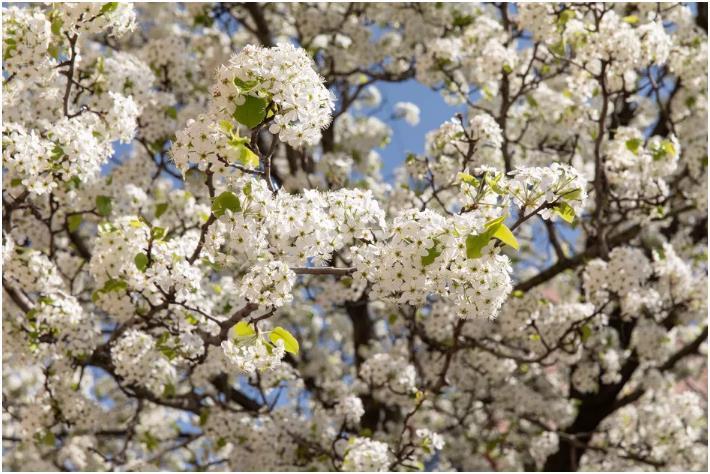
However, if you can obtain a different cultivar, this can be a nice inexpensive and easy-to-grow spring-blossoming tree with autumn fruits that, after frost, will soften and attract birds. Other cultivars such as "Autumn Blaze," "Chanticleer," or "White House" may still prove to be somewhat invasive; the seeds are mainly spread via bird droppings after they consume the fruit.
Botanical Name Prunus calleryana
Common Name Callery pear
Plant Type Deciduous tree
Mature Size 30 to 50 feet
Sun Exposure Full sun
Soil Type Moist, well-drained, tolerant of most soils
Soil pH Slightly acidic 6.0-7.0
Bloom Time Spring
Flower Color White
Hardiness Zones 4 to 9
Native Area China, Vietnam
Planting the Callery Pear
Choosing a site for this tree should allow for its mature height of at least thirty feet tall and twenty feet wide. The canopy tends to grow in a upright narrow shape, and can get quite cluttered unless pruned regularly, so avoid planting near electrical wiring or too close to a structure. It is also susceptible to ice damage, so avoid planting near drainage pipes or other spots, such as next to eaves, roofs or gutters, where water run off could be an issue. Despite having been wildly popular for several decades as an urban landscape specimen, many cities now discourage planting this tree in highly-visible areas. Some orchardists use this tree as grafting stock for edible pear varieties such as Bosc or Comice pears, so it can be an inexpensive option for starting a small pear orchard if you have some grafts of pear trees available.
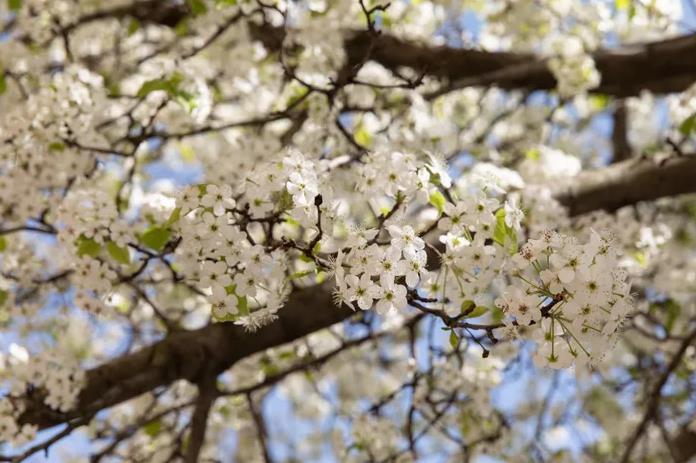
Soil and Sun
The Callery pear is tolerant of most soil conditions, including alkaline or clay soils. Ideally it should have slightly acidic, well-drained soil, but its tolerant nature means it may be planted in difficult areas where other trees are hard to grow. This tree does not tolerate salty soils well, so should not be planted by street or road edges where salt use in winter is common.
This tree needs at least six hours of full sun per day to thrive and bear blossoms and fruit. Seedlings may spring up in shadier areas.
Water
The Callery pear is tolerant of drought, but regular rainfall or watering are best to keep it healthy. Mulching the base can help preserve moisture in a dry season.
Pruning and Maintenance
Due to its vulnerability to limb loss, couples with its fast growth rate, this tree can sometimes become asymmetrical in form, making it less desirable as a landscape tree. Careful and regular pruning in the first few years after planting can help to control the shape and form of this tree and make it less susceptible to damage or disfigurement from storm or wind damage. The life span of the Callery pear is often less than twenty-five years unless it is cared for in ways that address its particular weaknesses, namely its tendency to grow vertically and without forming well-angled limbs.
The common cultivar is "Bradford" which was commonly planted in the United States as an urban landscape tree, but is these days regarded as an undesirable and even invasive species. The Callery pear is very resistant to disease, and generally sturdy, but the "Bradford" cultivar is susceptible to damage from stormy weather. This is due in part to their rapid rate of growth, which was also one of the characteristics that made them a desirable urban tree, until their various problems became evident. This includes spring blossoms that give off a faint but rather unpleasant carrion-like odor; if there is a whole row of these on one street he fragrance in spring can be quite overpowering, and not in a good way.
Ironically, their showy and profuse blossoms were one of the qualities mentioned when this tree was being eagerly promoted for widespread planting. One sees many Bradford pear trees that still remain in cities across the United States, but where possible some cities have replaced them with heartier trees that remain healthier and more attractive over time.

However, if you can obtain a different cultivar, this can be a nice inexpensive and easy-to-grow spring-blossoming tree with autumn fruits that, after frost, will soften and attract birds. Other cultivars such as "Autumn Blaze," "Chanticleer," or "White House" may still prove to be somewhat invasive; the seeds are mainly spread via bird droppings after they consume the fruit.
Botanical Name Prunus calleryana
Common Name Callery pear
Plant Type Deciduous tree
Mature Size 30 to 50 feet
Sun Exposure Full sun
Soil Type Moist, well-drained, tolerant of most soils
Soil pH Slightly acidic 6.0-7.0
Bloom Time Spring
Flower Color White
Hardiness Zones 4 to 9
Native Area China, Vietnam
Planting the Callery Pear
Choosing a site for this tree should allow for its mature height of at least thirty feet tall and twenty feet wide. The canopy tends to grow in a upright narrow shape, and can get quite cluttered unless pruned regularly, so avoid planting near electrical wiring or too close to a structure. It is also susceptible to ice damage, so avoid planting near drainage pipes or other spots, such as next to eaves, roofs or gutters, where water run off could be an issue. Despite having been wildly popular for several decades as an urban landscape specimen, many cities now discourage planting this tree in highly-visible areas. Some orchardists use this tree as grafting stock for edible pear varieties such as Bosc or Comice pears, so it can be an inexpensive option for starting a small pear orchard if you have some grafts of pear trees available.

Soil and Sun
The Callery pear is tolerant of most soil conditions, including alkaline or clay soils. Ideally it should have slightly acidic, well-drained soil, but its tolerant nature means it may be planted in difficult areas where other trees are hard to grow. This tree does not tolerate salty soils well, so should not be planted by street or road edges where salt use in winter is common.
This tree needs at least six hours of full sun per day to thrive and bear blossoms and fruit. Seedlings may spring up in shadier areas.
Water
The Callery pear is tolerant of drought, but regular rainfall or watering are best to keep it healthy. Mulching the base can help preserve moisture in a dry season.
Pruning and Maintenance
Due to its vulnerability to limb loss, couples with its fast growth rate, this tree can sometimes become asymmetrical in form, making it less desirable as a landscape tree. Careful and regular pruning in the first few years after planting can help to control the shape and form of this tree and make it less susceptible to damage or disfigurement from storm or wind damage. The life span of the Callery pear is often less than twenty-five years unless it is cared for in ways that address its particular weaknesses, namely its tendency to grow vertically and without forming well-angled limbs.
0
0
文章
Miss Chen
2021年07月19日

Sweet alyssum is a colorful carpet of tiny flowers that can be used to blanket your garden or landscape. Native to Europe, the low-growing foliage grows quickly, covering the ground with tiny cross-shaped, four-petal flowers within two months of being planted. Its gray-green leaves are slightly hairy, narrow, and lance-shaped.
Easy to grow from plant or seed, sweet alyssum is a cool-season flower that can be set out in early spring once all danger of frost has passed (in frost-free climates, sweet alyssum can also be grown throughout the fall and winter). Most varieties will fade in the heat but bloom again in the fall.
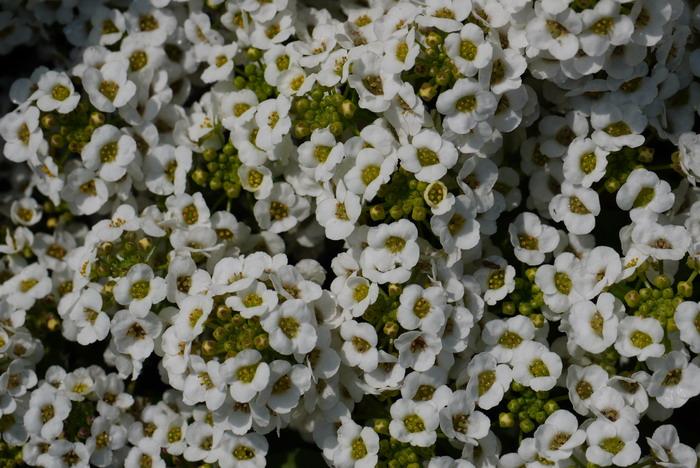
Botanical Name Lobularia maritima
Common Names Sweet alyssum, alyssum, carpet flower
Plant Type Herbaceous perennial
Mature Size 3–9 in. tall, 6–12 in. wide
Sun Exposure Full sun, partial shade
Soil Type Moist but well-drained
Soil pH Neutral to acidic
Bloom Time Spring, Fall
Flower Color White, pink, purple
Hardiness Zones 5–9 (USDA)
Native Areas Europe
Toxicity Non-toxic
Sweet Alyssum Care
Sweet alyssum is nearly unmatched when it comes to ease of care, and is hardy to both heat and drought. The flowers have a lively, honey-like fragrance and are actually members of the mustard family—they will self-sow and can provide bright color year-after-year, especially in milder climates. Sweet alyssum is generally problem-free, although aphids can become a pest, especially when the plants are under stress.
As sweet alyssum plants spread, they create a living mulch under taller plants. You can use sweet alyssum along edges, in the garden, or to fill nooks and crannies on walkways and walls. The tight, free-flowering plants are also great in hanging baskets and containers.
Light
Sweet alyssum loves full sun, but it does not like prolonged dry periods. If your region is especially hot and dry, a slightly shaded area will work best for this plant, though you should keep in mind that it can get stem rot or leaf blight if too much shade prevents the leaves and soil from completely drying out. Generally, you should aim to plant your sweet alyssum somewhere where it can get six to eight hours of sunlight a day.
Soil
Sweet alyssum plants prefer soils that are of medium moisture and well-draining. They're tolerant of many different planting locations and can even be found on sandy beaches and dunes—though they can also grow on cultivated fields, walls, slopes, and even in cracks in sidewalks or walls. The plants will do poorly in boggy soil or where drainage is a particular problem.
Water
Provide your sweet alyssum plants with at least an inch of water every week, watering them more frequently during hot or dry spells. Make sure the water drains well, otherwise the plant is susceptible to rot. If you plant your sweet alyssum atop stone (or anywhere that dries out quickly), you will need to provide extra water—the same holds true of hot or dry weather.
Temperature and Humidity
In temperate weather, gardeners may be able to grow sweet alyssum all year long, though the actual plants themselves are short-lived. Typically, they self-seed so much that while it seems as though the same plants are surviving all year long, the reality is that new seedlings are filling in. Sweet alyssum plants repeat bloom, although many varieties tend to stop flowering in heat, only to often pick back up again in the fall. In areas of high humidity, you should compensate by reducing the amount of water given to plants.
Fertilizer
Typically, in-ground sweet alyssum plants do not need any fertilizer unless your soil is poor. Plants grown in containers will need monthly feedings using a water-soluble fertilizer for the container plants.
Sweet Alyssum Varieties
There are several common varieties of sweet alyssum:
'Easter Bonnet': An early blooming variety, typically found in lavender or white
'New Carpet of Snow': A low-growing variety, covered in petite white flowers
'Pastel Carpet': A varietal whose blooms blend pink, lavender, and cream
'Snow Crystals': A tidy, mounding variety with translucent white flowers
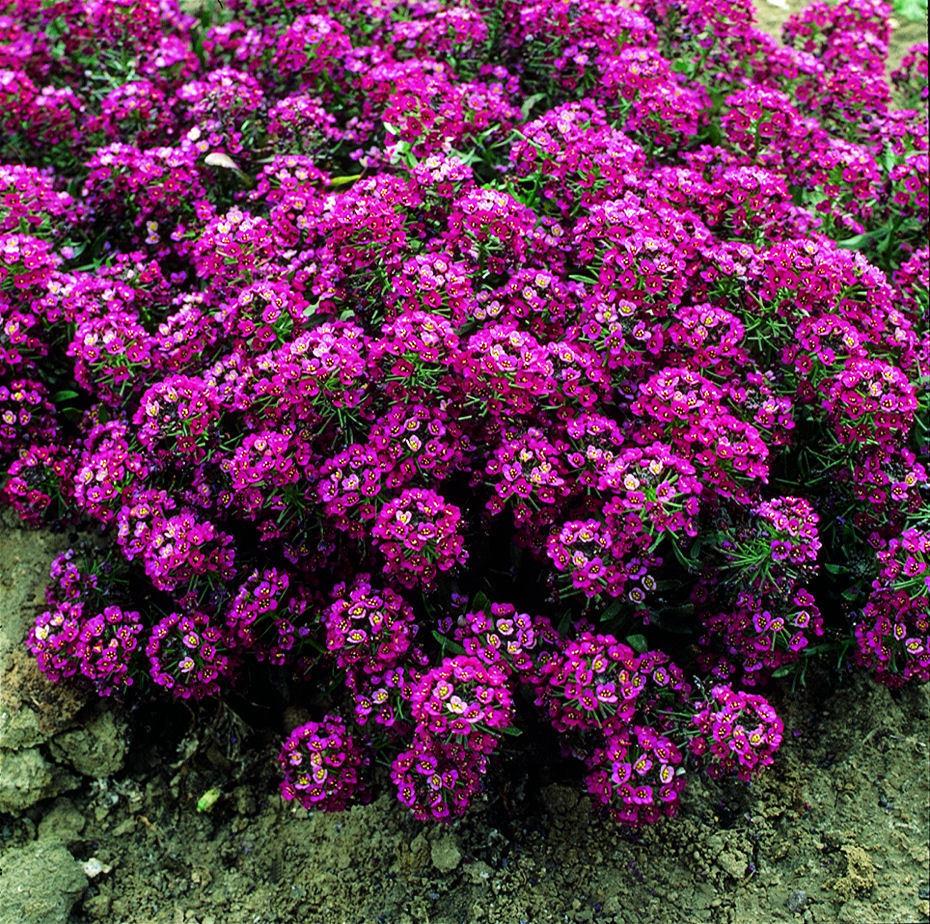
How to Grow Sweet Alyssum From Seed
You can start sweet alyssum from seed or plant, both of which are widely available at nurseries (though some new cultivars are not available as seeds). To start from seed, simply scatter the seeds atop the soil and press them down lightly so they make good contact with the dirt but are still exposed to light. Keep the soil moist until germination, then water whenever the soil feels dry.
You can direct seed outdoors once the soil feels warm to the touch or start alyssum seed indoors about eight weeks before your last frost date (do not transplant until after all danger of frost). Alyssum is somewhat frost-tolerant once established, but tender transplants are not hardy enough for frost.
Pruning
Deadheading sweet alyssum will keep the plants flowering—they will set new buds quickly. If you have a large drift of plants, shearing them by one-third would be an easier option than deadheading. Some varieties will readily re-seed themselves, but the plants tend to revert to the somewhat gangly species, so pruning will aid in that.
Easy to grow from plant or seed, sweet alyssum is a cool-season flower that can be set out in early spring once all danger of frost has passed (in frost-free climates, sweet alyssum can also be grown throughout the fall and winter). Most varieties will fade in the heat but bloom again in the fall.

Botanical Name Lobularia maritima
Common Names Sweet alyssum, alyssum, carpet flower
Plant Type Herbaceous perennial
Mature Size 3–9 in. tall, 6–12 in. wide
Sun Exposure Full sun, partial shade
Soil Type Moist but well-drained
Soil pH Neutral to acidic
Bloom Time Spring, Fall
Flower Color White, pink, purple
Hardiness Zones 5–9 (USDA)
Native Areas Europe
Toxicity Non-toxic
Sweet Alyssum Care
Sweet alyssum is nearly unmatched when it comes to ease of care, and is hardy to both heat and drought. The flowers have a lively, honey-like fragrance and are actually members of the mustard family—they will self-sow and can provide bright color year-after-year, especially in milder climates. Sweet alyssum is generally problem-free, although aphids can become a pest, especially when the plants are under stress.
As sweet alyssum plants spread, they create a living mulch under taller plants. You can use sweet alyssum along edges, in the garden, or to fill nooks and crannies on walkways and walls. The tight, free-flowering plants are also great in hanging baskets and containers.
Light
Sweet alyssum loves full sun, but it does not like prolonged dry periods. If your region is especially hot and dry, a slightly shaded area will work best for this plant, though you should keep in mind that it can get stem rot or leaf blight if too much shade prevents the leaves and soil from completely drying out. Generally, you should aim to plant your sweet alyssum somewhere where it can get six to eight hours of sunlight a day.
Soil
Sweet alyssum plants prefer soils that are of medium moisture and well-draining. They're tolerant of many different planting locations and can even be found on sandy beaches and dunes—though they can also grow on cultivated fields, walls, slopes, and even in cracks in sidewalks or walls. The plants will do poorly in boggy soil or where drainage is a particular problem.
Water
Provide your sweet alyssum plants with at least an inch of water every week, watering them more frequently during hot or dry spells. Make sure the water drains well, otherwise the plant is susceptible to rot. If you plant your sweet alyssum atop stone (or anywhere that dries out quickly), you will need to provide extra water—the same holds true of hot or dry weather.
Temperature and Humidity
In temperate weather, gardeners may be able to grow sweet alyssum all year long, though the actual plants themselves are short-lived. Typically, they self-seed so much that while it seems as though the same plants are surviving all year long, the reality is that new seedlings are filling in. Sweet alyssum plants repeat bloom, although many varieties tend to stop flowering in heat, only to often pick back up again in the fall. In areas of high humidity, you should compensate by reducing the amount of water given to plants.
Fertilizer
Typically, in-ground sweet alyssum plants do not need any fertilizer unless your soil is poor. Plants grown in containers will need monthly feedings using a water-soluble fertilizer for the container plants.
Sweet Alyssum Varieties
There are several common varieties of sweet alyssum:
'Easter Bonnet': An early blooming variety, typically found in lavender or white
'New Carpet of Snow': A low-growing variety, covered in petite white flowers
'Pastel Carpet': A varietal whose blooms blend pink, lavender, and cream
'Snow Crystals': A tidy, mounding variety with translucent white flowers

How to Grow Sweet Alyssum From Seed
You can start sweet alyssum from seed or plant, both of which are widely available at nurseries (though some new cultivars are not available as seeds). To start from seed, simply scatter the seeds atop the soil and press them down lightly so they make good contact with the dirt but are still exposed to light. Keep the soil moist until germination, then water whenever the soil feels dry.
You can direct seed outdoors once the soil feels warm to the touch or start alyssum seed indoors about eight weeks before your last frost date (do not transplant until after all danger of frost). Alyssum is somewhat frost-tolerant once established, but tender transplants are not hardy enough for frost.
Pruning
Deadheading sweet alyssum will keep the plants flowering—they will set new buds quickly. If you have a large drift of plants, shearing them by one-third would be an easier option than deadheading. Some varieties will readily re-seed themselves, but the plants tend to revert to the somewhat gangly species, so pruning will aid in that.
0
0
文章
ritau
2020年06月09日

Dactylis glomerata, also known as cock's-foot, orchard grass, or cat grass (due to its popularity for use with domestic cats) is a common species of grass in the genus Dactylis. It is a cool-season perennial C3 bunchgrass native throughout most of Europe, temperate Asia, and northern Africa.
Cock's-foot grows in dense perennial tussocks to 20–140 cm (8–55 in) tall, with grey-green leaves 20–50 cm (8–20 in) long and up to 1.5 cm (5⁄8 in) broad, and a distinctive tufted triangular flowerhead 10–15 cm (4–6 in) long, which may be either green or red- to purple-tinged (usually green in shade, redder in full sun), turning pale grey-brown at seed maturity. The spikelets are 5–9 mm (0.20–0.35 in) long, typically containing two to five flowers. It has a characteristic flattened stem base which distinguishes it from many other grasses.It flowers from June to September.
Cats chew on grass to help get healthy vitamins, minerals, and enzymes, but an indoor cat doesn’t have access to your lawn. Luckily, cat grass is very easy to grow indoors so you can provide your cat the nourishment it needs. Cat grass is usually a mix of wheat, oat, barley, or rye, and can be grown in soil or with a water substrate. Once you have the grass pot set up, your cat can enjoy eating it whenever it wants!

*How to grow
1. Fill a pot with planting soil until it’s 2 inches (5.1 cm) from the rim. Use an organic potting soil, so it’s safe for your cat to dig into. Choose a pot with a wide opening on top so the grass can spread out as it grows. Avoid using any fertilizers in your pot since cat grass grows and dies within a few months.
2. Scatter seeds in the pot and cover them with a thin layer of topsoil. Spread the seeds evenly across the soil until it’s completely covered. It’s okay for the seeds to overlap since the grasses’ root systems don’t take up much room. Once your seeds are in the pot, cover them with about 1⁄4 in (0.64 cm) of soil.
Cat grass seed packs can be purchased from your local pet store, garden center or online.
You may soak the seeds in a bowl with water one day before you plant them to help speed up germination. The seeds will absorb the water and are more likely to sprout within a few days.
3. Mist the soil until it’s moist. Put water in a spray bottle and gently mist the topsoil. Keep spraying water onto the soil until it feels damp to the touch. Don’t leave any standing water on the surface or else your seeds may not grow.Don’t pour water directly into the pot since it might drown the seeds and prevent growth.
4. Cover the pot for 2-3 days with plastic wrap and keep it in a cool, dark place. Plastic wrap helps maintain a humid environment and encourages your grass to sprout quickly. After you cover the pot, use a toothpick to poke a few holes into the plastic wrap so air can circulate. Store the pot in a cool and dark place, such as a kitchen cabinet or closet. After three days or when you see sprouts, remove the plastic wrap.

5. Move the pot, so it gets natural light and waits ten days for the sprouts to grow. Set the pot in an area of your home that gets direct and indirect sunlight throughout the day, such as a windowsill. After about ten days, the grass will be fully grown and ready for your cat to chew on.
Cock's-foot grows in dense perennial tussocks to 20–140 cm (8–55 in) tall, with grey-green leaves 20–50 cm (8–20 in) long and up to 1.5 cm (5⁄8 in) broad, and a distinctive tufted triangular flowerhead 10–15 cm (4–6 in) long, which may be either green or red- to purple-tinged (usually green in shade, redder in full sun), turning pale grey-brown at seed maturity. The spikelets are 5–9 mm (0.20–0.35 in) long, typically containing two to five flowers. It has a characteristic flattened stem base which distinguishes it from many other grasses.It flowers from June to September.
Cats chew on grass to help get healthy vitamins, minerals, and enzymes, but an indoor cat doesn’t have access to your lawn. Luckily, cat grass is very easy to grow indoors so you can provide your cat the nourishment it needs. Cat grass is usually a mix of wheat, oat, barley, or rye, and can be grown in soil or with a water substrate. Once you have the grass pot set up, your cat can enjoy eating it whenever it wants!

*How to grow
1. Fill a pot with planting soil until it’s 2 inches (5.1 cm) from the rim. Use an organic potting soil, so it’s safe for your cat to dig into. Choose a pot with a wide opening on top so the grass can spread out as it grows. Avoid using any fertilizers in your pot since cat grass grows and dies within a few months.
2. Scatter seeds in the pot and cover them with a thin layer of topsoil. Spread the seeds evenly across the soil until it’s completely covered. It’s okay for the seeds to overlap since the grasses’ root systems don’t take up much room. Once your seeds are in the pot, cover them with about 1⁄4 in (0.64 cm) of soil.
Cat grass seed packs can be purchased from your local pet store, garden center or online.
You may soak the seeds in a bowl with water one day before you plant them to help speed up germination. The seeds will absorb the water and are more likely to sprout within a few days.
3. Mist the soil until it’s moist. Put water in a spray bottle and gently mist the topsoil. Keep spraying water onto the soil until it feels damp to the touch. Don’t leave any standing water on the surface or else your seeds may not grow.Don’t pour water directly into the pot since it might drown the seeds and prevent growth.
4. Cover the pot for 2-3 days with plastic wrap and keep it in a cool, dark place. Plastic wrap helps maintain a humid environment and encourages your grass to sprout quickly. After you cover the pot, use a toothpick to poke a few holes into the plastic wrap so air can circulate. Store the pot in a cool and dark place, such as a kitchen cabinet or closet. After three days or when you see sprouts, remove the plastic wrap.

5. Move the pot, so it gets natural light and waits ten days for the sprouts to grow. Set the pot in an area of your home that gets direct and indirect sunlight throughout the day, such as a windowsill. After about ten days, the grass will be fully grown and ready for your cat to chew on.
0
0
文章
ritau
2020年04月05日

The peony or paeony is a flowering plant in the genus Paeonia, the only genus in the family Paeoniaceae. Peonies are native to Asia, Europe and Western North America. Scientists differ on the number of species that can be distinguished, ranging from 25 to 40, although the current consensus is 33 known species. The relationships between the species need to be further clarified.
Peonies are among the most popular garden plants in temperate regions. Herbaceous peonies are also sold as cut flowers on a large scale, although generally only available in late spring and early summer. An emerging source of peonies in mid to late summer is the Alaskan market. Unique growing conditions due to long hours of sunlight create availability from Alaska when other sources have completed harvest.
The peony is among the longest-used flowers in Eastern culture. Along with the plum blossom, it is a traditional floral symbol of China, where the Paeonia suffruticosa is called 牡丹 (mǔdān). It is also known as 富貴花 (fùguìhuā) "flower of riches and honour" or 花王 (huawang) "king of the flowers", and is used symbolically in Chinese art. In 1903, the Qing dynasty declared the peony as the national flower. Currently, the Republic of China government in Taiwan designates the plum blossom as the national flower, while the People's Republic of China government has no legally designated national flower. In 1994, the peony was proposed as the national flower after a nationwide poll, but the National People's Congress failed to ratify the selection. In 2003, another selection process was initiated, but no choice has been made to date.

The ancient Chinese city Luoyang has a reputation as a cultivation centre for the peonies. Throughout Chinese history, peonies in Luoyang have been said to be the finest in the country. Dozens of peony exhibitions and shows are still held there annually.
In the Middle Ages, peonies were often painted with their ripe seed-capsules, since it was the seeds, not the flowers, which were medically significant. Ancient superstition dictated that great care be taken not to be seen by a woodpecker while picking the plant's fruit, or the bird might peck out one's eyes.
In 1957, the Indiana General Assembly passed a law to make the peony the state flower of Indiana, a title which it holds to this day. It replaced the zinnia, which had been the state flower since 1931.
Mischievous nymphs were said to hide in the petals of the Peony, giving it the meaning of Shame or Bashfulness in the Language of Flowers. While the peony takes several years to re-establish itself when moved, it blooms annually for decades once it has done so.
Peonies tend to attract ants to the flower buds. This is due to the nectar that forms on the outside of the flower buds, and is not required for the plants' own pollination or other growth. The presence of ants is thought to provide some deterrence to other harmful insects though, so the production of ant-attracting nectar is plausibly a functional adaptation.Peonies are a common subject in tattoos, often used along with koi-fish. The popular use of peonies in Japanese tattoo was inspired by the ukiyo-e artist Utagawa Kuniyoshi's illustrations of Suikoden, a classical Chinese novel. His paintings of warrior-heroes covered in pictorial tattoos included lions, tigers, dragons, koi fish, and peonies, among other symbols. The peony became a masculine motif, associated with a devil-may-care attitude and disregard for consequence.
Famous painters of peonies have included Conrad Gessner (ca. 1550) and Auguste Renoir in 1879. Paeonia officinalis can be found in the altar picture of Maria im Rosenhag by Schongauer in the former Dominican Church in Colmar.The Italian Jesuit, painter and architect Giuseppe Castiglione (1688-1766), who worked at the court of the Qianlong Emperor in the Qing dynasty, painted peonies.

Peonies are among the most popular garden plants in temperate regions. Herbaceous peonies are also sold as cut flowers on a large scale, although generally only available in late spring and early summer. An emerging source of peonies in mid to late summer is the Alaskan market. Unique growing conditions due to long hours of sunlight create availability from Alaska when other sources have completed harvest.
The peony is among the longest-used flowers in Eastern culture. Along with the plum blossom, it is a traditional floral symbol of China, where the Paeonia suffruticosa is called 牡丹 (mǔdān). It is also known as 富貴花 (fùguìhuā) "flower of riches and honour" or 花王 (huawang) "king of the flowers", and is used symbolically in Chinese art. In 1903, the Qing dynasty declared the peony as the national flower. Currently, the Republic of China government in Taiwan designates the plum blossom as the national flower, while the People's Republic of China government has no legally designated national flower. In 1994, the peony was proposed as the national flower after a nationwide poll, but the National People's Congress failed to ratify the selection. In 2003, another selection process was initiated, but no choice has been made to date.

The ancient Chinese city Luoyang has a reputation as a cultivation centre for the peonies. Throughout Chinese history, peonies in Luoyang have been said to be the finest in the country. Dozens of peony exhibitions and shows are still held there annually.
In the Middle Ages, peonies were often painted with their ripe seed-capsules, since it was the seeds, not the flowers, which were medically significant. Ancient superstition dictated that great care be taken not to be seen by a woodpecker while picking the plant's fruit, or the bird might peck out one's eyes.
In 1957, the Indiana General Assembly passed a law to make the peony the state flower of Indiana, a title which it holds to this day. It replaced the zinnia, which had been the state flower since 1931.
Mischievous nymphs were said to hide in the petals of the Peony, giving it the meaning of Shame or Bashfulness in the Language of Flowers. While the peony takes several years to re-establish itself when moved, it blooms annually for decades once it has done so.
Peonies tend to attract ants to the flower buds. This is due to the nectar that forms on the outside of the flower buds, and is not required for the plants' own pollination or other growth. The presence of ants is thought to provide some deterrence to other harmful insects though, so the production of ant-attracting nectar is plausibly a functional adaptation.Peonies are a common subject in tattoos, often used along with koi-fish. The popular use of peonies in Japanese tattoo was inspired by the ukiyo-e artist Utagawa Kuniyoshi's illustrations of Suikoden, a classical Chinese novel. His paintings of warrior-heroes covered in pictorial tattoos included lions, tigers, dragons, koi fish, and peonies, among other symbols. The peony became a masculine motif, associated with a devil-may-care attitude and disregard for consequence.
Famous painters of peonies have included Conrad Gessner (ca. 1550) and Auguste Renoir in 1879. Paeonia officinalis can be found in the altar picture of Maria im Rosenhag by Schongauer in the former Dominican Church in Colmar.The Italian Jesuit, painter and architect Giuseppe Castiglione (1688-1766), who worked at the court of the Qianlong Emperor in the Qing dynasty, painted peonies.

0
0
文章
ritau
2020年03月09日

Calendula officinalis, the pot marigold, ruddles, common marigold or Scotch marigold, is a plant in the genus Calendula of the family Asteraceae. It is probably native to southern Europe, though its long history of cultivation makes its precise origin unknown, and it may possibly be of garden origin. It is also widely naturalised farther north in Europe (as far as southern England) and elsewhere in warm temperate regions of the world.
The Latin specific epithet officinalis refers to the plant's medical and herbal uses.

*Cultivation
Calendula officinalis is widely cultivated and can be grown easily in sunny locations in most kinds of soils. Although perennial, it is commonly treated as an annual, particularly in colder regions where its winter survival is poor, and in hot summer locations where it also does not survive.
Calendulas are considered by many gardening experts as among the easiest and most versatile flowers to grow in a garden, especially because they tolerate most soils. In temperate climates, seeds are sown in spring for blooms that last throughout the summer and well into the fall. In areas of limited winter freezing, seeds are sown in autumn for winter color. Plants will wither in subtropical summer. Seeds will germinate freely in sunny or half-sunny locations, but plants do best if planted in sunny locations with rich, well-drained soil. Pot marigolds typically bloom quickly from seed (in under two months) in bright yellows, golds, and oranges.
Leaves are spirally arranged, 5–18 cm long, simple, and slightly hairy. The flower heads range from pastel yellow to deep orange, and are 3–7 cm across, with both ray florets and disc florets. Most cultivars have a spicy aroma. It is recommended to deadhead (remove dying flower heads) the plants regularly to maintain even blossom production.
*Uses
Pot marigold florets are edible. They are often used to add color to salads or added to dishes as a garnish and in lieu of saffron. The leaves are edible but are often not palatable. They have a history of use as a potherb and in salads.

Flowers were used in ancient Greek, Roman, Middle Eastern, and Indian cultures as a medicinal herb, as well as a dye for fabrics, foods, and cosmetics.Many of these uses persist today. They are also used to make oil that protects the skin.
Marigold leaves can also be made into a poultice that helps scratches and shallow cuts to heal faster, and can help prevent infection.
The Latin specific epithet officinalis refers to the plant's medical and herbal uses.

*Cultivation
Calendula officinalis is widely cultivated and can be grown easily in sunny locations in most kinds of soils. Although perennial, it is commonly treated as an annual, particularly in colder regions where its winter survival is poor, and in hot summer locations where it also does not survive.
Calendulas are considered by many gardening experts as among the easiest and most versatile flowers to grow in a garden, especially because they tolerate most soils. In temperate climates, seeds are sown in spring for blooms that last throughout the summer and well into the fall. In areas of limited winter freezing, seeds are sown in autumn for winter color. Plants will wither in subtropical summer. Seeds will germinate freely in sunny or half-sunny locations, but plants do best if planted in sunny locations with rich, well-drained soil. Pot marigolds typically bloom quickly from seed (in under two months) in bright yellows, golds, and oranges.
Leaves are spirally arranged, 5–18 cm long, simple, and slightly hairy. The flower heads range from pastel yellow to deep orange, and are 3–7 cm across, with both ray florets and disc florets. Most cultivars have a spicy aroma. It is recommended to deadhead (remove dying flower heads) the plants regularly to maintain even blossom production.
*Uses
Pot marigold florets are edible. They are often used to add color to salads or added to dishes as a garnish and in lieu of saffron. The leaves are edible but are often not palatable. They have a history of use as a potherb and in salads.

Flowers were used in ancient Greek, Roman, Middle Eastern, and Indian cultures as a medicinal herb, as well as a dye for fabrics, foods, and cosmetics.Many of these uses persist today. They are also used to make oil that protects the skin.
Marigold leaves can also be made into a poultice that helps scratches and shallow cuts to heal faster, and can help prevent infection.
0
0
文章
Miss Chen
2018年09月06日

With their 2- to 5-feet-tall spikes and their bell-shaped, 2- to 3-inch flowers that have spotted throats and range in color from yellow and white to pink or purple, common foxgloves (Digitalis purpurea) are easily identifiable in the garden. These European natives are deer- and rabbit-resistant and attract hummingbirds. Hardy in U.S. Department of Agriculture plant hardiness zones 4 through 8, foxgloves prefer well-drained soil in a sunny to partially shady area of the garden. With proper care, they grow oblong, light-green foliage in their first year and bloom the next year.
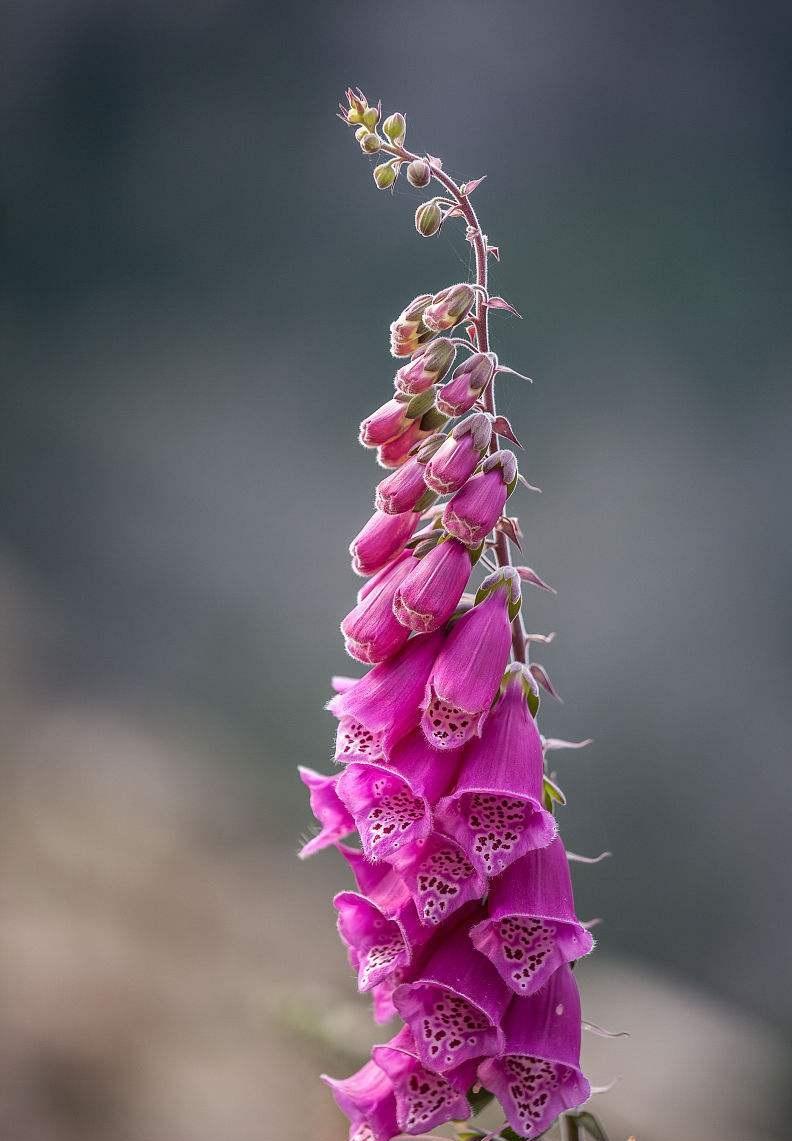
Step 1
Water foxgloves immediately after planting them, thoroughly soaking the soil around the plants. Keep the soil somewhat wet initially, watering about three times during the first week. Provide 1 inch of water each week afterward, maintaining consistently moist, but not wet, soil and adjusting your watering frequency after rainfall. Water foxgloves in early morning, and avoid getting their leaves wet to prevent diseases.
Step 2
Dig a 1-inch-deep trench in a 3-inch diameter around each foxglove plant. Sprinkle one handful of 5-10-5 granular fertilizer in each trench. Fill the trenches with soil, and water the soil. Do this in early spring and again six and 12 weeks afterward. Alternatively, apply a 1- to 2-inch-thick layer of compost around the foxgloves each spring to provide nutrients.
Step 3
Spread a 2-inch-thick layer of organic mulch, such as shredded leaves or bark chips, on the soil around the foxgloves. Keep the mulch about 1 to 2 inches away from the plants. Mulch promotes soil moisture retention and keeps weeds at bay.
Step 4
Treat and prevent powdery mildew outbreaks by properly spacing plants to allow proper air circulation, water from below and not overhead, clean up leaf debris below foxgloves and prune off affected foliage. Spray severe infections with ready-to-use Neem oil or horticultural oil, saturating the plant's foliage and repeating weekly or as needed. Do not use oil-based products when temperatures are above 90 degrees Fahrenheit or the plant is stressed from drought.
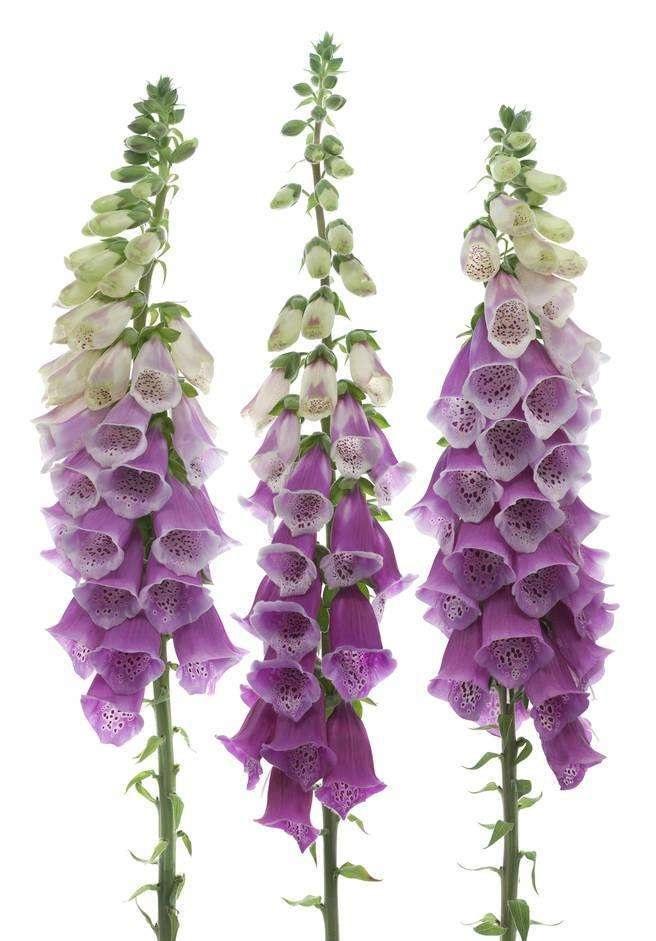
Step 5
Remove slugs or snails from the foxglove's foliage in the early morning when the pests are most active. Wear gloves and pick the pest from the plant, placing them in a small bowl of soapy water. Prune off any foliage damaged by the snails or slugs.
Step 6
Pinch off the foxgloves' wilted or faded flowers. Doing so keeps the plants looking neat and prevents them from spending energy on making seeds. Alternatively, wait until two-thirds of the flowers have faded, and then use pruning shears to cut back each entire stalk at the point where its base meets the bottom leaves.

Step 1
Water foxgloves immediately after planting them, thoroughly soaking the soil around the plants. Keep the soil somewhat wet initially, watering about three times during the first week. Provide 1 inch of water each week afterward, maintaining consistently moist, but not wet, soil and adjusting your watering frequency after rainfall. Water foxgloves in early morning, and avoid getting their leaves wet to prevent diseases.
Step 2
Dig a 1-inch-deep trench in a 3-inch diameter around each foxglove plant. Sprinkle one handful of 5-10-5 granular fertilizer in each trench. Fill the trenches with soil, and water the soil. Do this in early spring and again six and 12 weeks afterward. Alternatively, apply a 1- to 2-inch-thick layer of compost around the foxgloves each spring to provide nutrients.
Step 3
Spread a 2-inch-thick layer of organic mulch, such as shredded leaves or bark chips, on the soil around the foxgloves. Keep the mulch about 1 to 2 inches away from the plants. Mulch promotes soil moisture retention and keeps weeds at bay.
Step 4
Treat and prevent powdery mildew outbreaks by properly spacing plants to allow proper air circulation, water from below and not overhead, clean up leaf debris below foxgloves and prune off affected foliage. Spray severe infections with ready-to-use Neem oil or horticultural oil, saturating the plant's foliage and repeating weekly or as needed. Do not use oil-based products when temperatures are above 90 degrees Fahrenheit or the plant is stressed from drought.

Step 5
Remove slugs or snails from the foxglove's foliage in the early morning when the pests are most active. Wear gloves and pick the pest from the plant, placing them in a small bowl of soapy water. Prune off any foliage damaged by the snails or slugs.
Step 6
Pinch off the foxgloves' wilted or faded flowers. Doing so keeps the plants looking neat and prevents them from spending energy on making seeds. Alternatively, wait until two-thirds of the flowers have faded, and then use pruning shears to cut back each entire stalk at the point where its base meets the bottom leaves.
0
0
文章
Dummer. ゛☀
2017年10月02日


Sempervivum arachnoideum (Cobweb Houseleek, Spider Web Hens and Chicks) is low-growing, evergreen, perennial succulent, native to the mountain of Europe from the Pyrenees to the Carpathians.
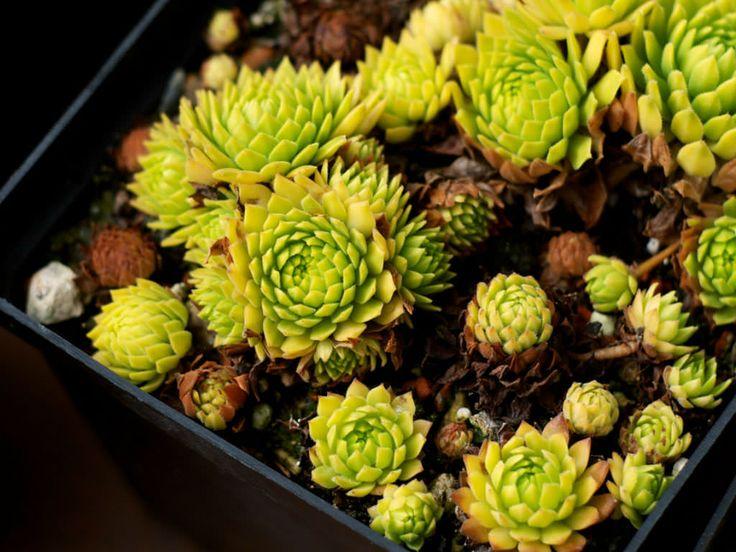
Cobweb Houseleek is valued in cultivation for its ability to colonize hot, dry areas via offsets.
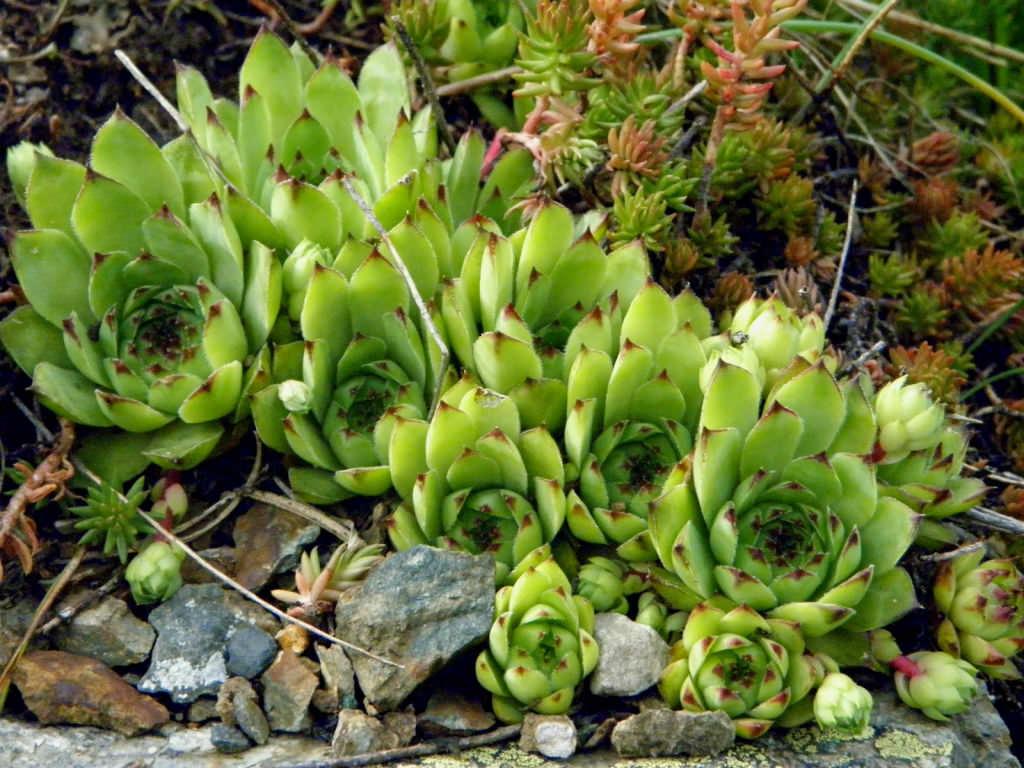
The plant has been variously utilized by the local populations in the traditional medicine and furthermore when growing on the roofs it was used to protect the houses against thunderbolts and witchcraft.
2
0
文章
Dummer. ゛☀
2017年10月02日

Sempervivum arachnoideum (Cobweb Houseleek, Spider Web Hens and Chicks) is low-growing, evergreen, perennial succulent, native to the mountain of Europe from the Pyrenees to the Carpathians.
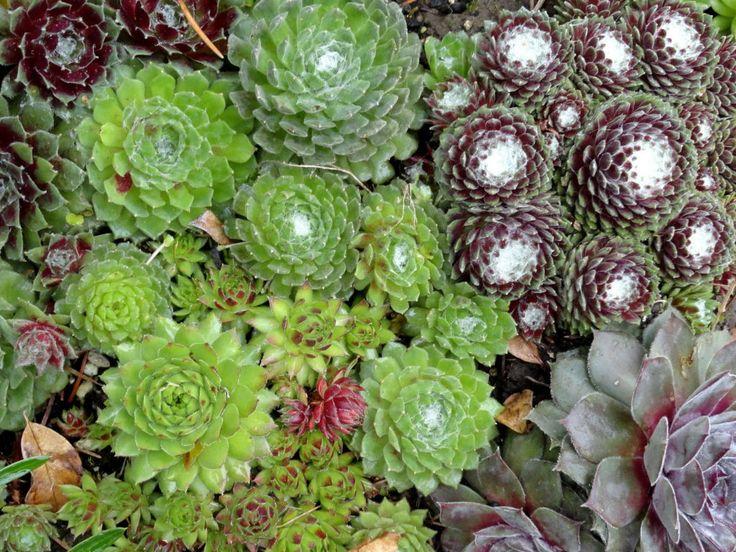
The leaves of Cobweb Houseleek are emollient, haemostatic, ophthalmic and sedative.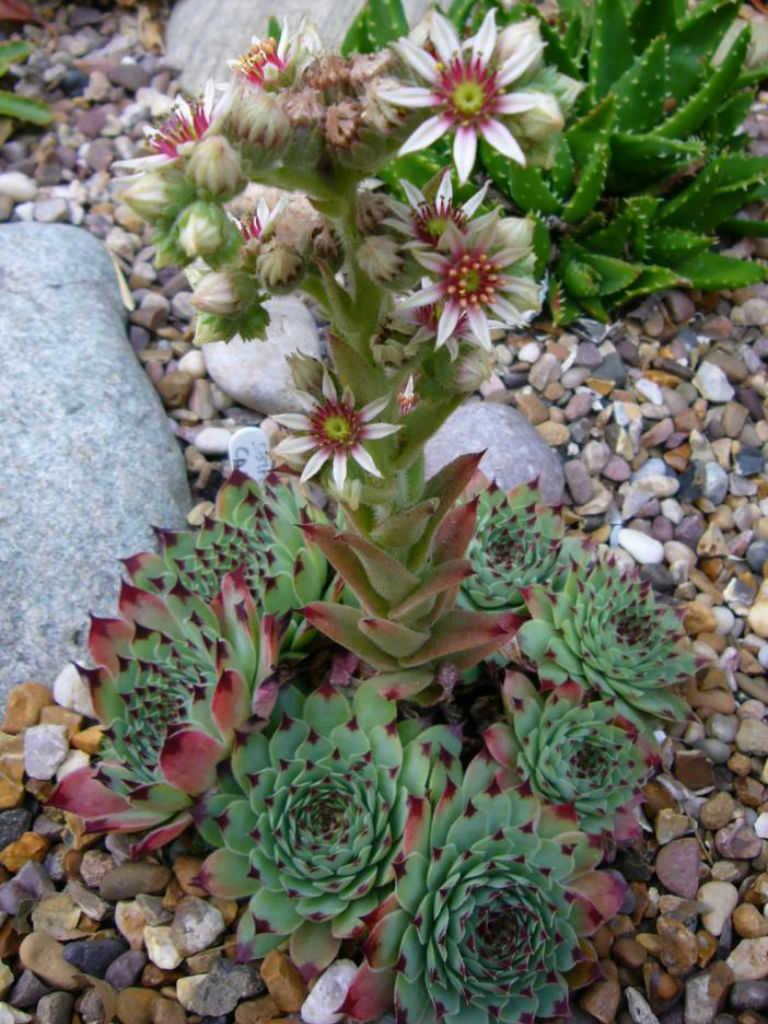
The crushed plant, or its juice, is applied externally to boils, wounds etc and is also used to stop nose bleeds. The slightly warmed juice has been used to relieve ear inflammations and toothaches can be relieved by chewing on the leaves. When macerated and infused in vinegar, the plant can be used to get rid of warts and corns.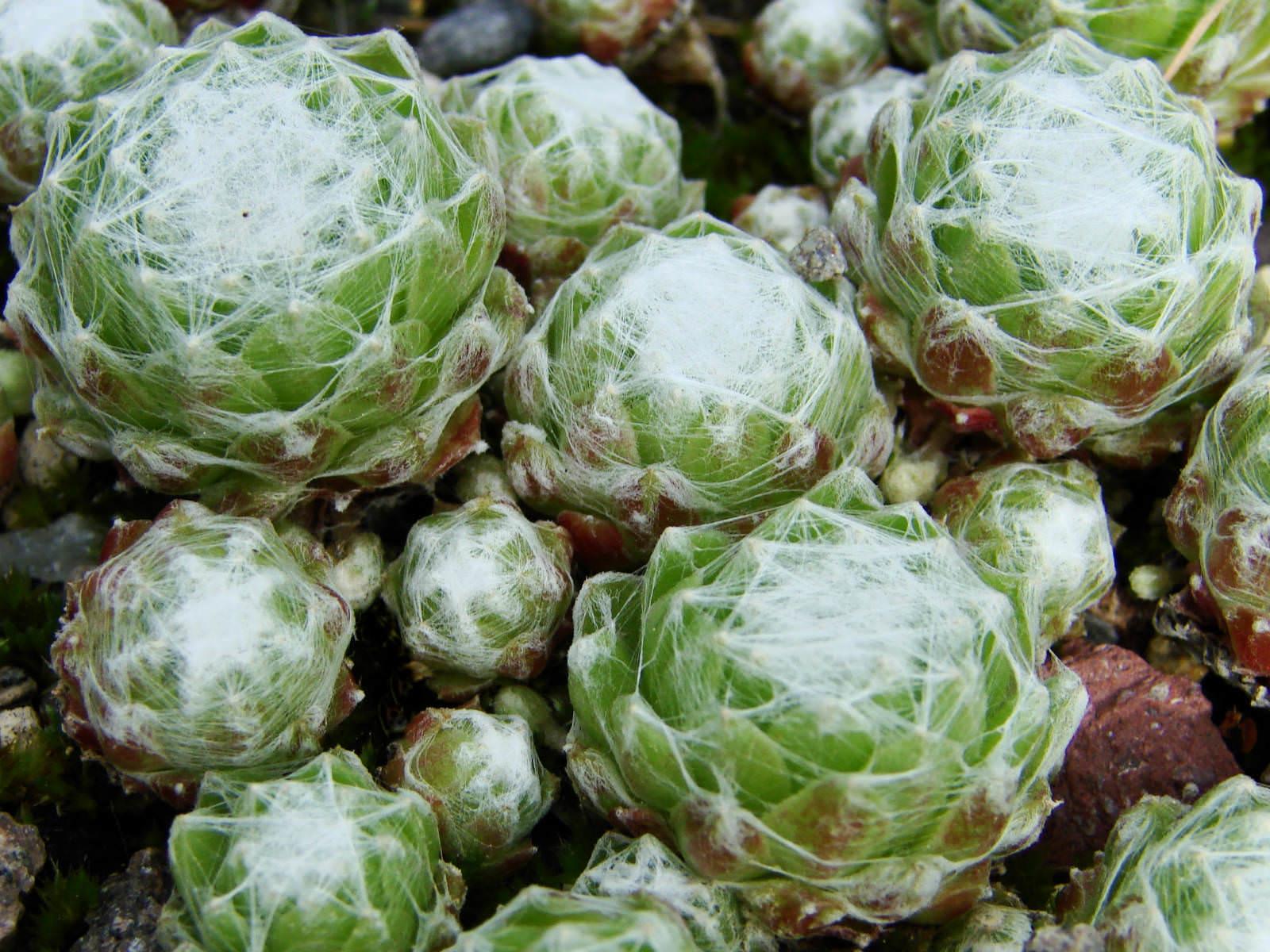
The leaves are harvested in the summer and are best used when fresh since they are difficult to dry properly. The leaf pulp is used to make a cooling face mask for reddened or sunburnt skin.

The leaves of Cobweb Houseleek are emollient, haemostatic, ophthalmic and sedative.

The crushed plant, or its juice, is applied externally to boils, wounds etc and is also used to stop nose bleeds. The slightly warmed juice has been used to relieve ear inflammations and toothaches can be relieved by chewing on the leaves. When macerated and infused in vinegar, the plant can be used to get rid of warts and corns.

The leaves are harvested in the summer and are best used when fresh since they are difficult to dry properly. The leaf pulp is used to make a cooling face mask for reddened or sunburnt skin.
0
1
文章
Dummer. ゛☀
2017年10月01日

Sempervivum arachnoideum (Cobweb Houseleek, Spider Web Hens and Chicks) is low-growing, evergreen, perennial succulent, native to the mountain of Europe from the Pyrenees to the Carpathians.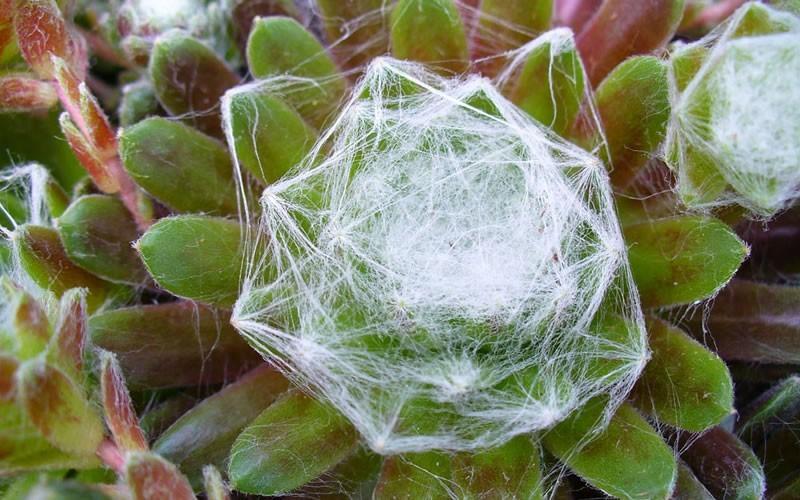
The leaves of Cobweb Houseleek are emollient, haemostatic, ophthalmic and sedative.
The crushed plant, or its juice, is applied externally to boils, wounds etc and is also used to stop nose bleeds. The slightly warmed juice has been used to relieve ear inflammations and toothaches can be relieved by chewing on the leaves. When macerated and infused in vinegar, the plant can be used to get rid of warts and corns.
The leaves are harvested in the summer and are best used when fresh since they are difficult to dry properly. The leaf pulp is used to make a cooling face mask for reddened or sunburnt skin.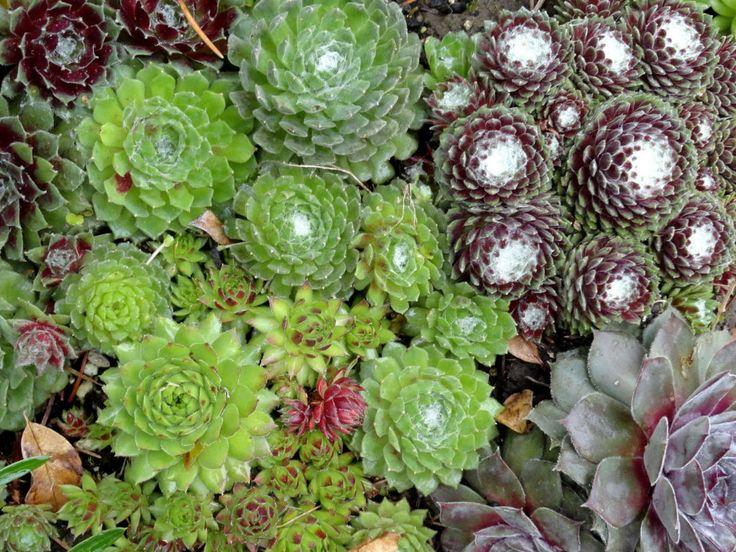

The leaves of Cobweb Houseleek are emollient, haemostatic, ophthalmic and sedative.
The crushed plant, or its juice, is applied externally to boils, wounds etc and is also used to stop nose bleeds. The slightly warmed juice has been used to relieve ear inflammations and toothaches can be relieved by chewing on the leaves. When macerated and infused in vinegar, the plant can be used to get rid of warts and corns.

The leaves are harvested in the summer and are best used when fresh since they are difficult to dry properly. The leaf pulp is used to make a cooling face mask for reddened or sunburnt skin.

0
0
文章
Dummer. ゛☀
2017年09月30日

In Europe during the late 1800s, the idea that flowers represented feelings grew into a system of communicating through flower arrangements. Code books guided those who wanted to compose or read floral messages. According to one book, the apple blossom meant “Will the glow of love finally redden your delicate cheeks?” Field clover signified “Let me know when I can see you again.” A red rose petal meant “Yes!”, a white one “No!” Spurge, a green flower, carried the message: “Your nature is so cold that one might think your heart made of stone.” Users of this elaborate language needed not only a code book but also the ability to recognize blooms.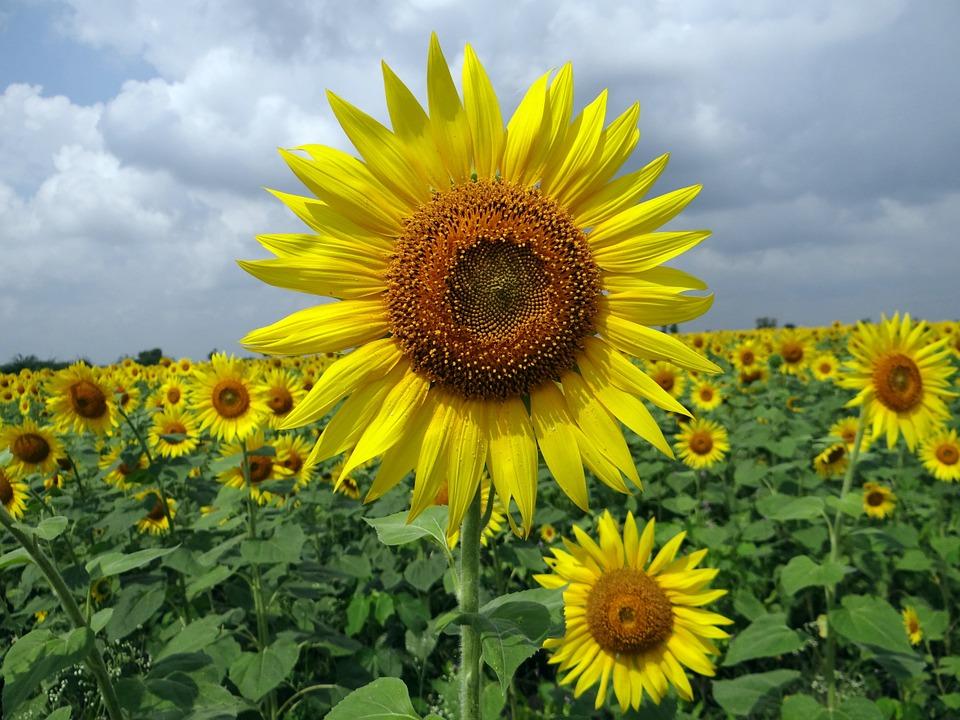
When Christians adopted the rose as a symbol, it still carried connections with ancient mother goddesses. The flower became associated with Mary, the mother of Christ, who was sometimes addressed as the Mystic or Holy Rose. In time, the rose took on additional meanings in Christian symbolism. Red roses came to represent the blood shed by the martyrs who died for their faith; white ones stood for innocence and purity. One Christian legend says that roses originally had no thorns. But after the sin of Adam and Eve—for which they were driven out of the Garden of Eden—the rose grew thorns to remind people that they no longer lived ill a state of perfection.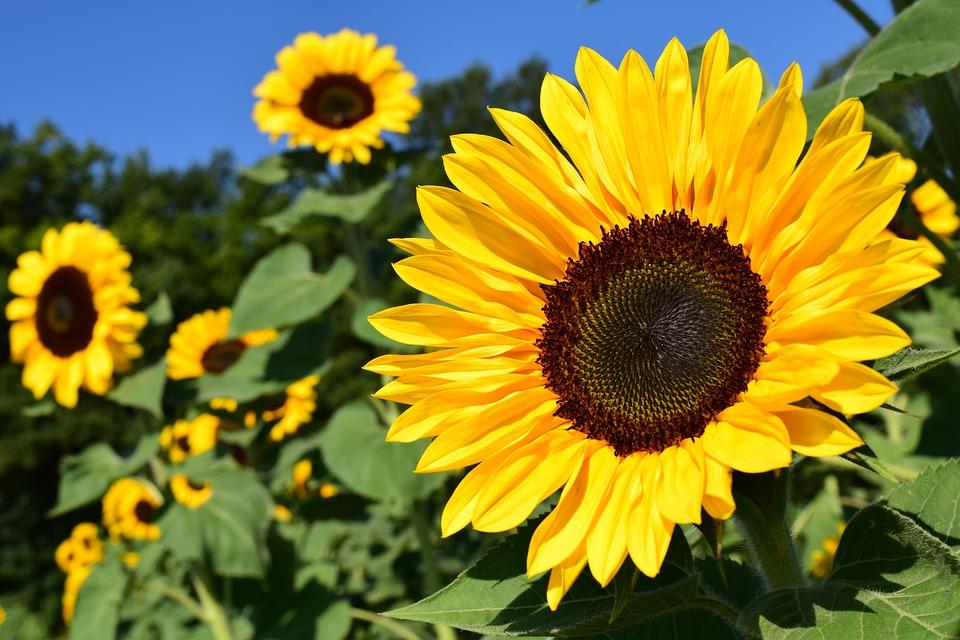
Sunflower
Some flowers turn their heads during the day, revolving slowly on their stalks to face the sun as it travels across the sky. The Greek myth of Clytie and Apollo, which exists in several versions, explains this movement as the legacy of a lovesick girl.
Clytie, who was either a water nymph or a princess of the ancient city of Babylon, fell in love with Apollo, god of the sun. For a time the god returned her love, but then he tired of her. The forlorn Clytie sat, day after day, slowly turning her head to watch Apollo move across the sky in his sun chariot. Eventually, the gods took pity on her and turned her into a flower. In some versions of the myth, she became a heliotrope or a marigold, but most accounts say that Clytie became a sunflower.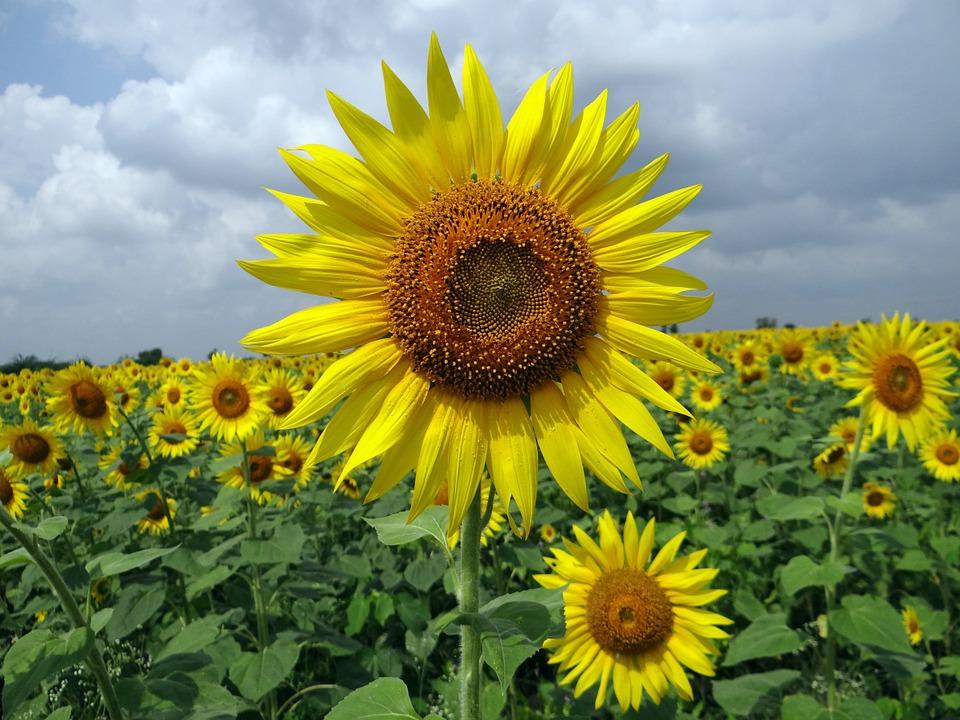
Violet
The violet, which grows low to the ground and has small purple or white flowers, appeared in an ancient Near Eastern myth that probably inspired the Greek and Roman myth of Venus and Adonis. According to this story, the great mother goddess Cybele loved Attis, who was killed while hunting a wild boar. Where his blood fell on the ground, violets grew.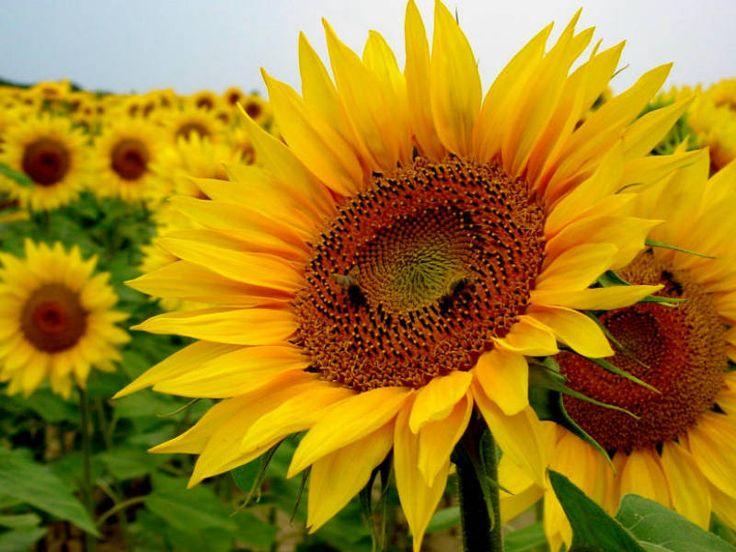
The Greeks believed that violets were sacred to the god Ares and to Io, one of the many human loves of Zeus. Later, in Christian symbolism, the violet stood for the virtue of humility, or hum ble modesty, and several legends tell of violets springing up on the graves of virgins and saints. European folktales associate violets with death and mourning.

When Christians adopted the rose as a symbol, it still carried connections with ancient mother goddesses. The flower became associated with Mary, the mother of Christ, who was sometimes addressed as the Mystic or Holy Rose. In time, the rose took on additional meanings in Christian symbolism. Red roses came to represent the blood shed by the martyrs who died for their faith; white ones stood for innocence and purity. One Christian legend says that roses originally had no thorns. But after the sin of Adam and Eve—for which they were driven out of the Garden of Eden—the rose grew thorns to remind people that they no longer lived ill a state of perfection.

Sunflower
Some flowers turn their heads during the day, revolving slowly on their stalks to face the sun as it travels across the sky. The Greek myth of Clytie and Apollo, which exists in several versions, explains this movement as the legacy of a lovesick girl.
Clytie, who was either a water nymph or a princess of the ancient city of Babylon, fell in love with Apollo, god of the sun. For a time the god returned her love, but then he tired of her. The forlorn Clytie sat, day after day, slowly turning her head to watch Apollo move across the sky in his sun chariot. Eventually, the gods took pity on her and turned her into a flower. In some versions of the myth, she became a heliotrope or a marigold, but most accounts say that Clytie became a sunflower.

Violet
The violet, which grows low to the ground and has small purple or white flowers, appeared in an ancient Near Eastern myth that probably inspired the Greek and Roman myth of Venus and Adonis. According to this story, the great mother goddess Cybele loved Attis, who was killed while hunting a wild boar. Where his blood fell on the ground, violets grew.

The Greeks believed that violets were sacred to the god Ares and to Io, one of the many human loves of Zeus. Later, in Christian symbolism, the violet stood for the virtue of humility, or hum ble modesty, and several legends tell of violets springing up on the graves of virgins and saints. European folktales associate violets with death and mourning.
0
0
文章
Dummer. ゛☀
2017年09月28日

Asphodelus is a genus of mainly perennial plants first described for modern science in 1753 and commonly known as Asphodels.
The genus is native to temperate Europe, the Mediterranean, Africa, the Middle East, and the Indian Subcontinent, and now naturalized in other places.
Asphodels are popular garden plants, which grow in well-drained soils with abundant natural light. The plants are hardy herbaceous perennials with narrow tufted radical leaves and an elongated stem bearing a handsome spike of white or yellow flowers. Asphodelus albus and Asphodelus fistulosus have white flowers and grow from 1.5 to 2 feet (45 to 60 cm) high. Asphodelus ramosus is a larger plant, the large white flowers of which have a reddish-brown line in the middle of each segment.
Growing Conditions and General Cultivation
Grow Asphodels in moderately fertile, well-drained soil in full sun. Does not tolerate heavy, poorly-drained soil. Irrigate occasionally to very little in coastal gardens. Considered hardy to USDA zone 6. It tolerates temperature down to 14ºF (-10ºC).
Great as a border or accent plant.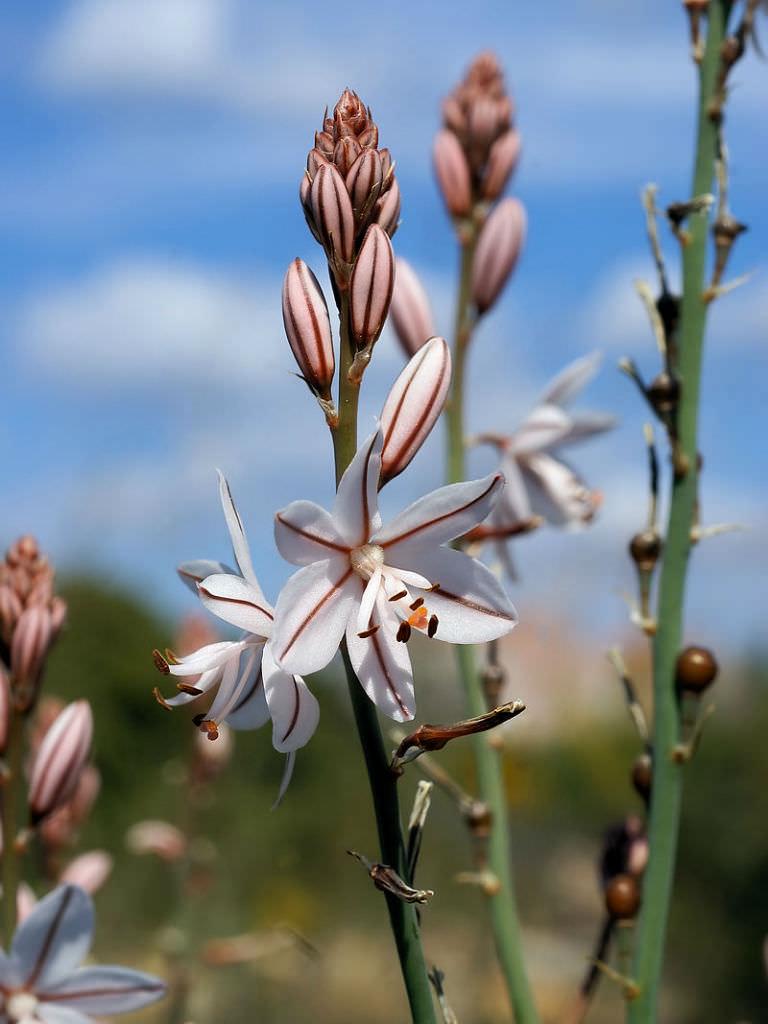
Propagation
Propagate Asphodels by seed, sown in pots in a cold frame in spring or propagate by division after flowering.
Pruning
Although you can cut back flower stems after flowering the seedheads are attractive so can be left.

The genus is native to temperate Europe, the Mediterranean, Africa, the Middle East, and the Indian Subcontinent, and now naturalized in other places.
Asphodels are popular garden plants, which grow in well-drained soils with abundant natural light. The plants are hardy herbaceous perennials with narrow tufted radical leaves and an elongated stem bearing a handsome spike of white or yellow flowers. Asphodelus albus and Asphodelus fistulosus have white flowers and grow from 1.5 to 2 feet (45 to 60 cm) high. Asphodelus ramosus is a larger plant, the large white flowers of which have a reddish-brown line in the middle of each segment.

Growing Conditions and General Cultivation
Grow Asphodels in moderately fertile, well-drained soil in full sun. Does not tolerate heavy, poorly-drained soil. Irrigate occasionally to very little in coastal gardens. Considered hardy to USDA zone 6. It tolerates temperature down to 14ºF (-10ºC).
Great as a border or accent plant.

Propagation
Propagate Asphodels by seed, sown in pots in a cold frame in spring or propagate by division after flowering.
Pruning
Although you can cut back flower stems after flowering the seedheads are attractive so can be left.
0
0
文章
Dummer. ゛☀
2017年09月28日

The genus Ferraria was named in honor of Giovanni Battista Ferrari, who first described a Ferraria in 1633. Ferrarias were brought to Europe before the middle of the 17th century and cultivated there as items of interest, in part due to their unusual flowers.
Growing in spring from underground corms, Ferrarias are primarily grown for their unique and frilly, speckled flowers, which usually range in shades of brown to yellow, violet and blue or combinations of all of these colors and even green. Ferrarias last a single day, but established plants will usually produce a large number.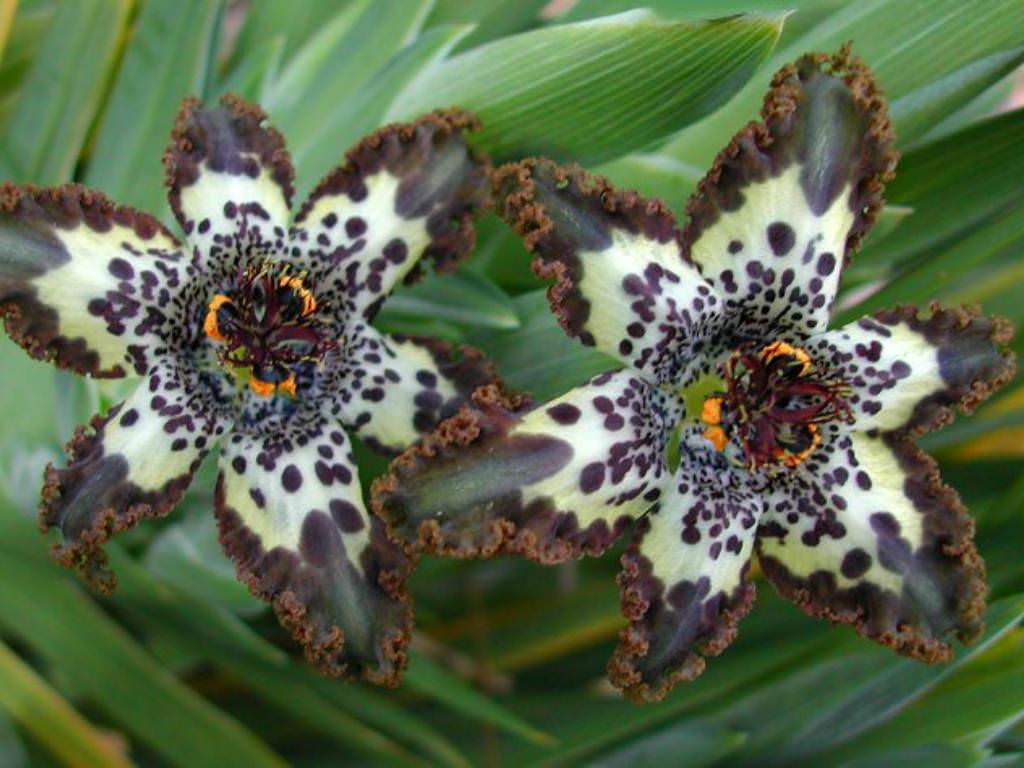
Ferrarias also have an unusual shape. They are relatively small and many of the flowers emit an unpleasant aroma, reminiscent of rotten meat. However, there are some spider flowers that are sweetly scented such as F. brevifolia, F. kamiesbergensis and F. schaeferi.
Ferrarias make lovely additions to the garden, adding a unique charm of their own. The star-like flowers, which resemble a starfish, have also prompted the nickname of Starfish Lily.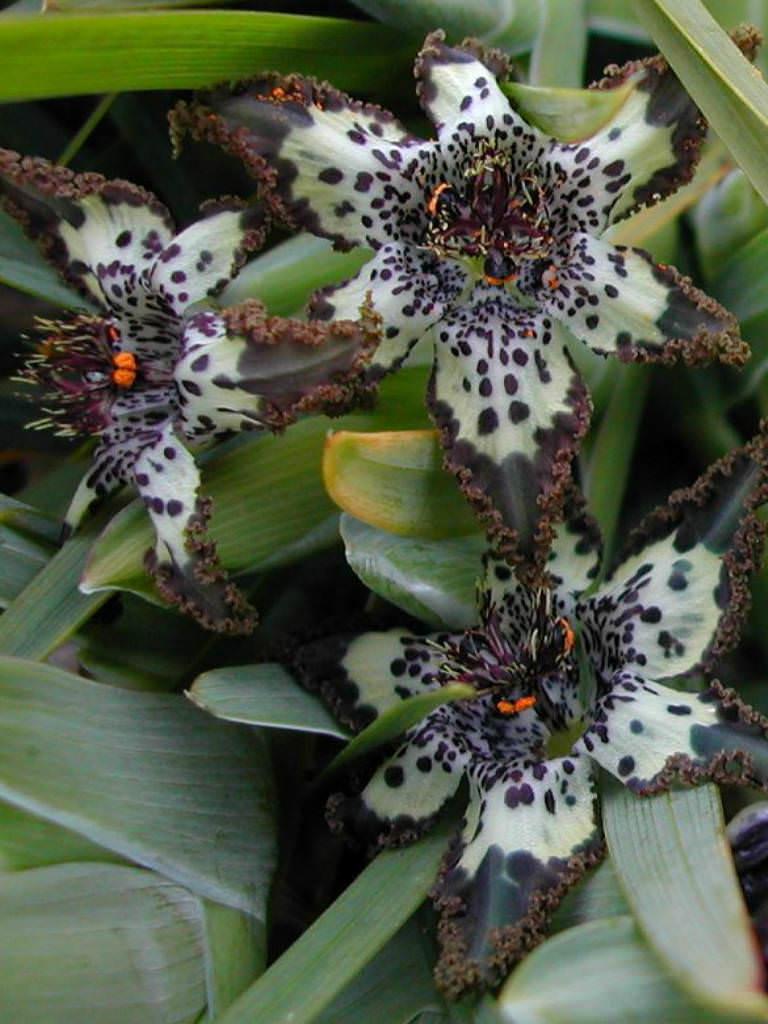
Growing Conditions and General Care
Ferrarias are easy bulbs to grow. These plants prefer to be located in sun or semi-shade in loamy, well-drained soil just beneath the surface (1-2 inches/2.5-5 cm). Plants in too much shade will fail to bloom and will eventually die out. The rarer species are generally best grown in pots or containers.
The care of Ferraria corms don’t require too much either. Once their spring flowering has completed, the foliage will slowly begin to fade and the Ferraria flowers go dormant in summer. During this time, all watering should be limited.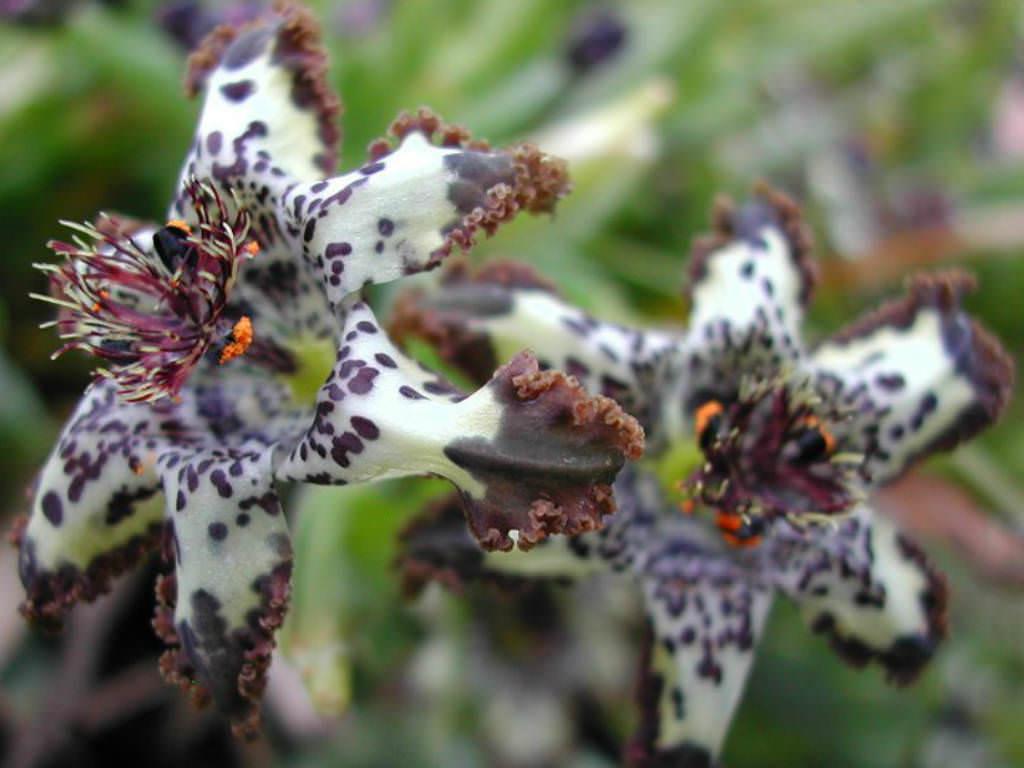
Bring any container-grown plants indoors for over wintering and provide a generous amount of mulch for winter protection to those growing outdoors.
Established Ferraria plants will produce large clumps each year. These can be easily divided in the spring when overcrowding becomes a problem or if additional plants are desired elsewhere in the garden.

Growing in spring from underground corms, Ferrarias are primarily grown for their unique and frilly, speckled flowers, which usually range in shades of brown to yellow, violet and blue or combinations of all of these colors and even green. Ferrarias last a single day, but established plants will usually produce a large number.

Ferrarias also have an unusual shape. They are relatively small and many of the flowers emit an unpleasant aroma, reminiscent of rotten meat. However, there are some spider flowers that are sweetly scented such as F. brevifolia, F. kamiesbergensis and F. schaeferi.
Ferrarias make lovely additions to the garden, adding a unique charm of their own. The star-like flowers, which resemble a starfish, have also prompted the nickname of Starfish Lily.

Growing Conditions and General Care
Ferrarias are easy bulbs to grow. These plants prefer to be located in sun or semi-shade in loamy, well-drained soil just beneath the surface (1-2 inches/2.5-5 cm). Plants in too much shade will fail to bloom and will eventually die out. The rarer species are generally best grown in pots or containers.
The care of Ferraria corms don’t require too much either. Once their spring flowering has completed, the foliage will slowly begin to fade and the Ferraria flowers go dormant in summer. During this time, all watering should be limited.

Bring any container-grown plants indoors for over wintering and provide a generous amount of mulch for winter protection to those growing outdoors.
Established Ferraria plants will produce large clumps each year. These can be easily divided in the spring when overcrowding becomes a problem or if additional plants are desired elsewhere in the garden.
0
0
文章
Dummer. ゛☀
2017年09月28日

Lamium (Dead Nettle) is a trailing, groundcover perennial. The name “Dead Nettle” refers to the fact that Lamium does not have the stinging hairs characteristic of other nettles. Native to Europe and western Asia, Lamium is frequently found naturalized along woodland trails and paths and colonized along the banks of streams. Its variegated leaves and colorful spring flowers make Lamium a reliable choice for brightening shady garden spots where few other perennials will grow.
Growing Conditions
Lamium is undemanding and easy to grow in partial to fully shaded locations. It prefers well-drained soil but will do fine in dry shade if you provide it with regular watering. A member of the mint family, Lamium spreads quickly, is self-seeding, and will rapidly create a groundcover wherever it is planted. Its brittle, fragile stems help keep it from becoming aggressively invasive and also allow bulbs and other perennials to penetrate its foliage.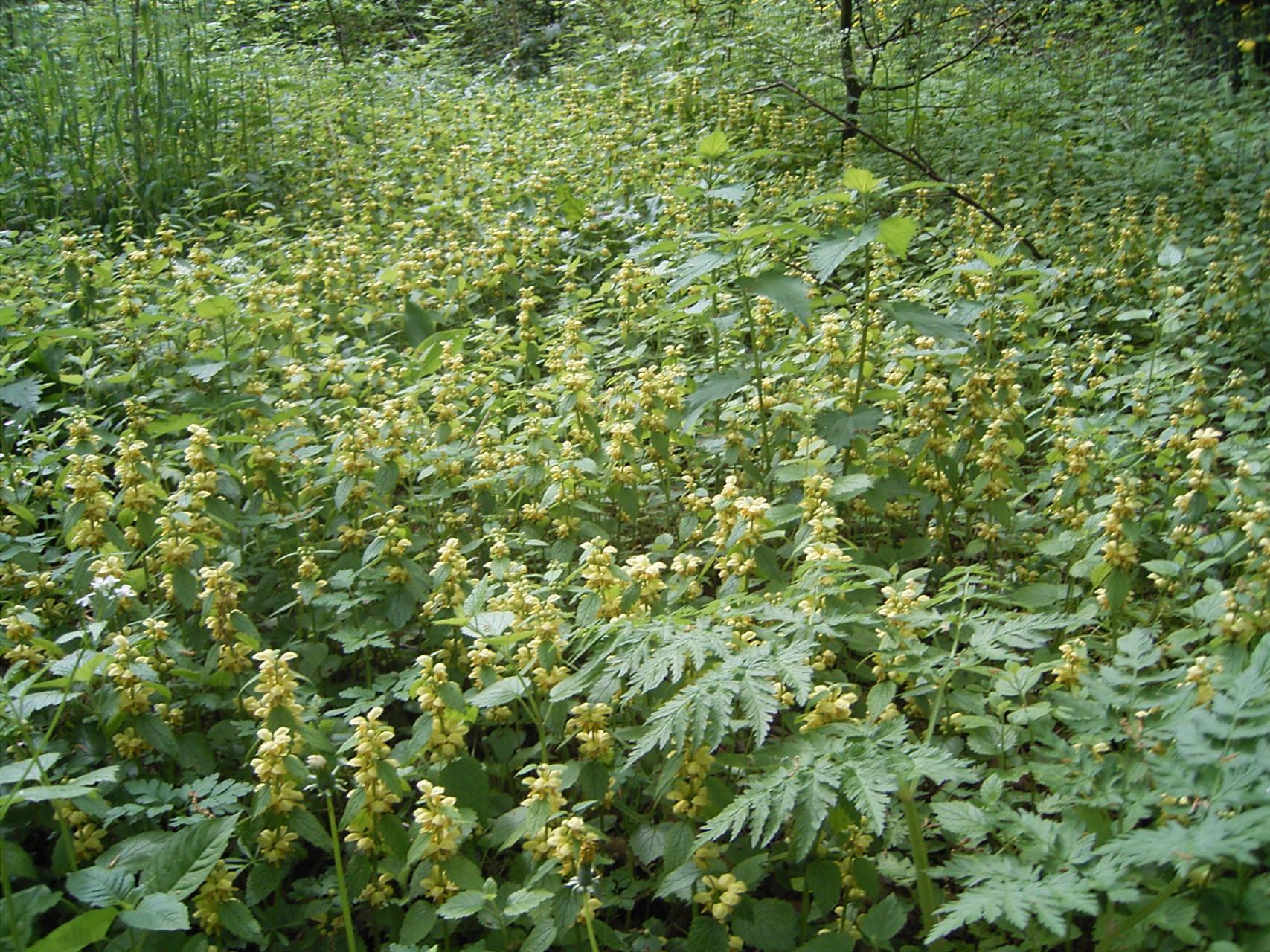
General Care
In regions with cold winters, Lamium is deciduous. In milder climates, it is semi-evergreen. In either case, cut back shabby foliage after the first frost to make way for new growth in the spring. In midsummer, after the blooming period is over, prune plants back by one-third to help prevent them from becoming too invasive. The midsummer shearing also encourages a second blooming period in September. Not terribly picky, spotted Dead Nettles do just fine in average, well-drained soil. There is no need to apply fertilizer, as this can encourage them to become too robust and invasive.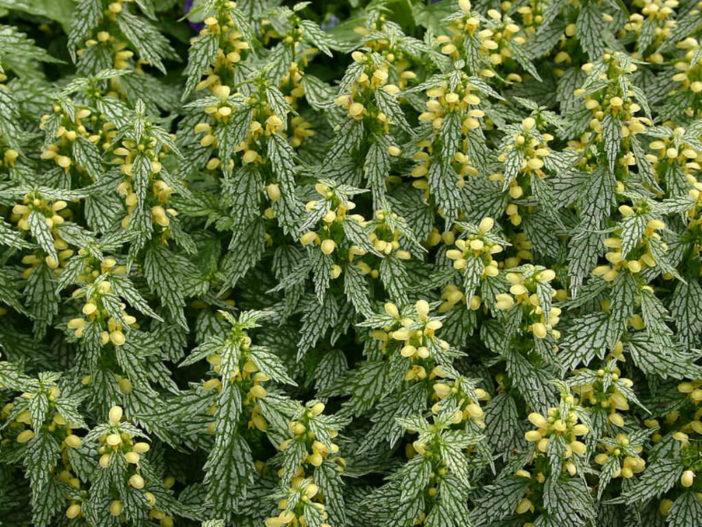
Pests and Diseases
Lamium is rarely troubled by disease and is generally pest-free. Slugs and snails may be occasional visitors. Check your plants regularly and, if slugs or snails are present, handpick and dispose of them as they appear. Early mornings and evenings and after periods of damp weather are the best times to hunt for these pests. Another method of control some gardeners use is placing saucers of stale beer among their plants, with the lip of the container at ground level. Slugs and snails are attracted to the liquid, fall in and drown.

Growing Conditions
Lamium is undemanding and easy to grow in partial to fully shaded locations. It prefers well-drained soil but will do fine in dry shade if you provide it with regular watering. A member of the mint family, Lamium spreads quickly, is self-seeding, and will rapidly create a groundcover wherever it is planted. Its brittle, fragile stems help keep it from becoming aggressively invasive and also allow bulbs and other perennials to penetrate its foliage.

General Care
In regions with cold winters, Lamium is deciduous. In milder climates, it is semi-evergreen. In either case, cut back shabby foliage after the first frost to make way for new growth in the spring. In midsummer, after the blooming period is over, prune plants back by one-third to help prevent them from becoming too invasive. The midsummer shearing also encourages a second blooming period in September. Not terribly picky, spotted Dead Nettles do just fine in average, well-drained soil. There is no need to apply fertilizer, as this can encourage them to become too robust and invasive.

Pests and Diseases
Lamium is rarely troubled by disease and is generally pest-free. Slugs and snails may be occasional visitors. Check your plants regularly and, if slugs or snails are present, handpick and dispose of them as they appear. Early mornings and evenings and after periods of damp weather are the best times to hunt for these pests. Another method of control some gardeners use is placing saucers of stale beer among their plants, with the lip of the container at ground level. Slugs and snails are attracted to the liquid, fall in and drown.
0
0
文章
Dummer. ゛☀
2017年09月28日

Polygonatum also known as King Solomon’s Seal or Solomon’s Seal is a close relative of the Lily of the Valley, with several similar species that are native to North America, northern Europe and Siberia, and cultivated as popular garden ornamentals. The hardy perennial has stems of 3 feet (90 cm) in height that finally curve gracefully and bear pale green, oval leaves and drooping clusters of creamy white flowers, followed by blue-black berries.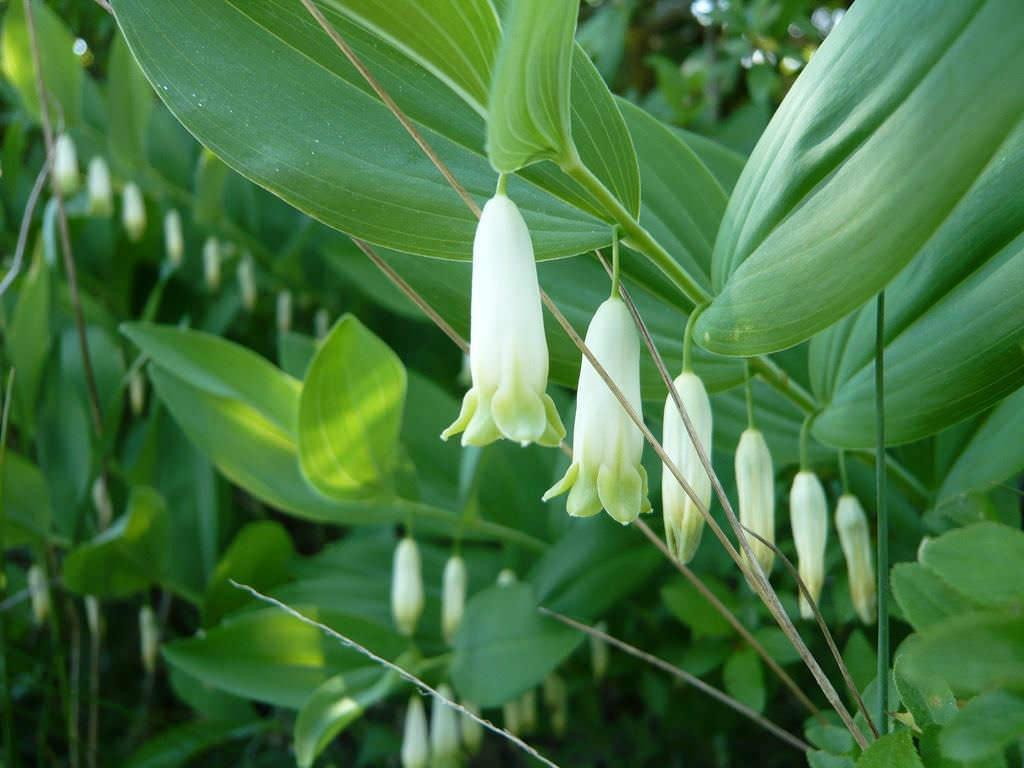
Solomon’s Seal plants are an excellent choice for woodland or shade gardens and for using as background plantings with hardy ferns. They look great when planted in large containers. Solomon’s Seal plants are usually grown from rhizomes which should be planted 2 inches (5 cm) deep in the spring or fall.
Solomon’s Seal has a rich history that goes back many thousands of years. Herbalists and healers, both in Europe and North America and the Far East, have written about its diverse effects on numerous conditions. It can be used as a herbal tincture, salve, tea or supplement. As an alternative remedy, it may offer relief, healing or mending to sports injuries and other conditions related to tendons, joints, ligaments, bones, bruises, connecting tissues, cartilage, etc. It also soothes and repairs gastrointestinal inflammation and injuries. It is effective for feminine issues, such as menstrual cramps, PMS, bleeding, and the like. Additionally, it is known to lower blood pressure and relieve dry coughs.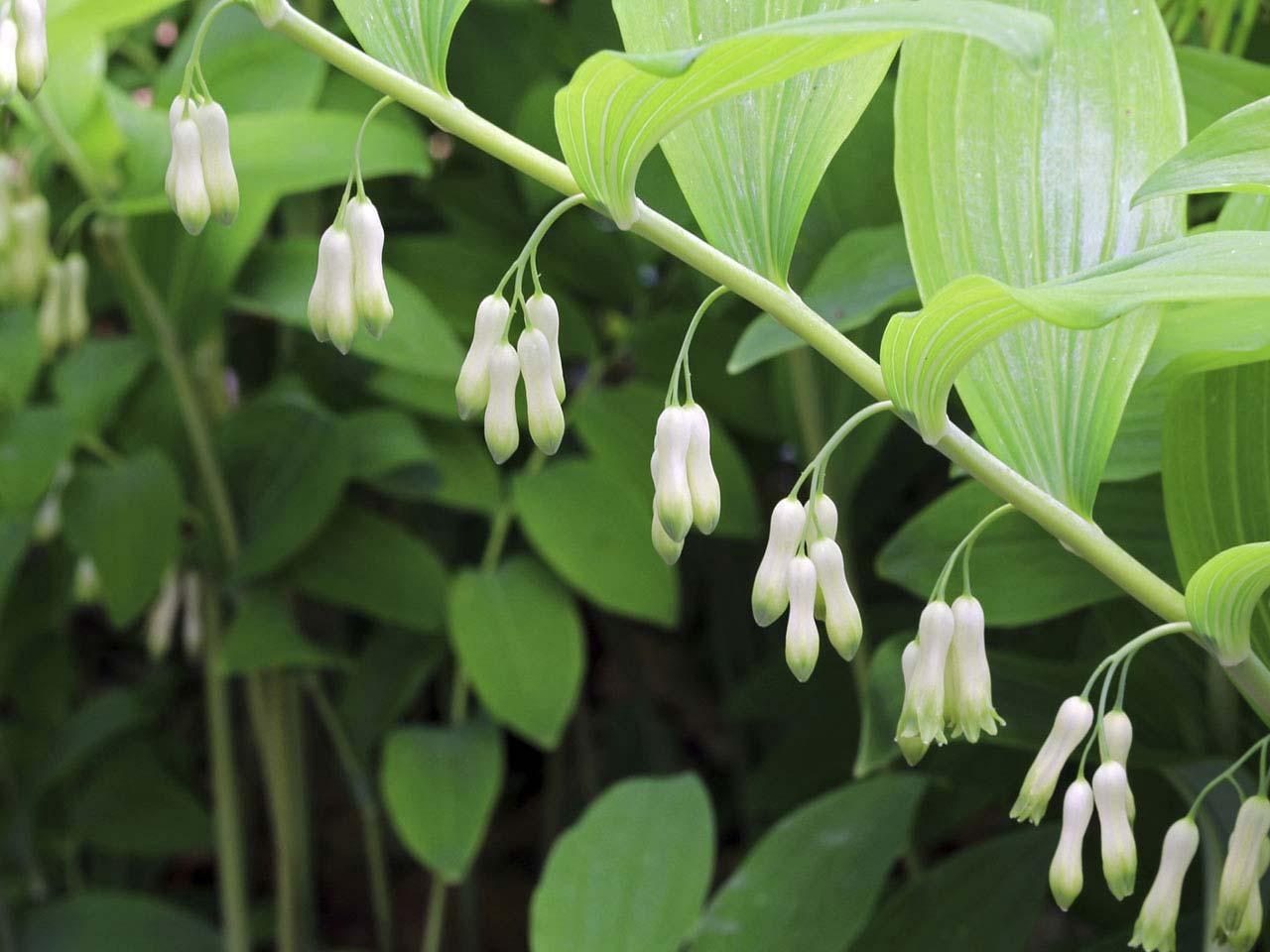
Growing Conditions
Plants are usually started by transplants or rhizomes. Seeds of Polygonatum can take up to 2 years to sprout, so you will get some seeding in established plantings.
Solomon’s Seal like a rich organic soil with a pH in the acidic to neutral zone. They need some shade to truly thrive. Damp shade is even better, although once established, they are quite drought tolerant. Plants can be started in the spring or fall. Plant only 1 to 2 inches (2.5 to 5 cm) deep and about 2 to 3 inches (5 to 7.5 cm) apart.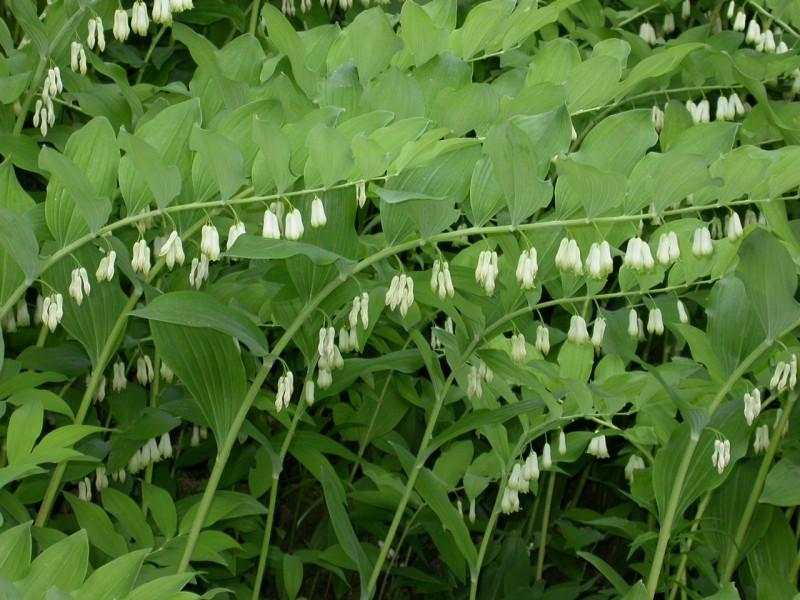
General Care
Solomon’s Seal seldom needs division. It takes several years before a clump is large enough to divide for propagation purposes. When ready, divide in early spring or fall and leave several buds on each division, for the best success. The rhizomes can be divided even further, but it will take longer for them to become established. Another option is to remove and plant just the offsets at the out edges of a clump.
Solomon’s Seal does not require deadheading. The flowers are small and will drop off naturally. The foliage remains attractive all season, so the plant is virtually maintenance free. The stems even disconnect from the rhizomes on their own, after frost. But before that, the foliage turns a nice golden yellow.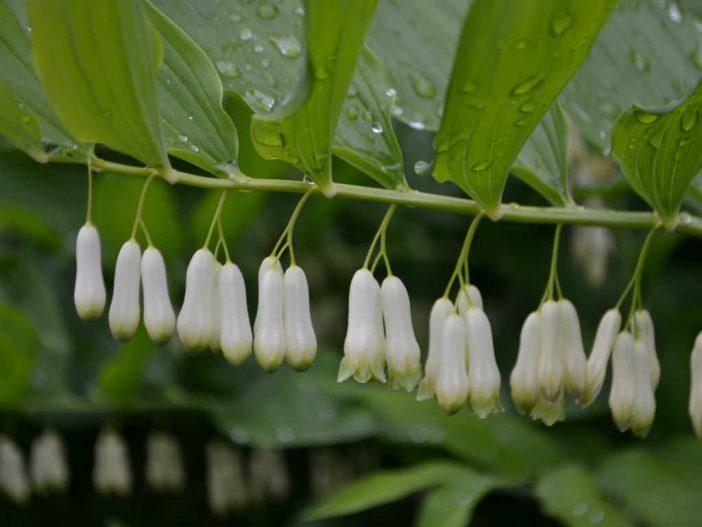
Pests and Diseases
Healthy Solomon’s Seal growing in good conditions seem to have few problems. If the weather is extremely damp, you may see signs of powdery mildew or another fugal disease. These should ameliorate as things dry out. Better air circulation will also help. Slugs and snails can also become a problem in damper areas.

Solomon’s Seal plants are an excellent choice for woodland or shade gardens and for using as background plantings with hardy ferns. They look great when planted in large containers. Solomon’s Seal plants are usually grown from rhizomes which should be planted 2 inches (5 cm) deep in the spring or fall.

Solomon’s Seal has a rich history that goes back many thousands of years. Herbalists and healers, both in Europe and North America and the Far East, have written about its diverse effects on numerous conditions. It can be used as a herbal tincture, salve, tea or supplement. As an alternative remedy, it may offer relief, healing or mending to sports injuries and other conditions related to tendons, joints, ligaments, bones, bruises, connecting tissues, cartilage, etc. It also soothes and repairs gastrointestinal inflammation and injuries. It is effective for feminine issues, such as menstrual cramps, PMS, bleeding, and the like. Additionally, it is known to lower blood pressure and relieve dry coughs.

Growing Conditions
Plants are usually started by transplants or rhizomes. Seeds of Polygonatum can take up to 2 years to sprout, so you will get some seeding in established plantings.
Solomon’s Seal like a rich organic soil with a pH in the acidic to neutral zone. They need some shade to truly thrive. Damp shade is even better, although once established, they are quite drought tolerant. Plants can be started in the spring or fall. Plant only 1 to 2 inches (2.5 to 5 cm) deep and about 2 to 3 inches (5 to 7.5 cm) apart.

General Care
Solomon’s Seal seldom needs division. It takes several years before a clump is large enough to divide for propagation purposes. When ready, divide in early spring or fall and leave several buds on each division, for the best success. The rhizomes can be divided even further, but it will take longer for them to become established. Another option is to remove and plant just the offsets at the out edges of a clump.
Solomon’s Seal does not require deadheading. The flowers are small and will drop off naturally. The foliage remains attractive all season, so the plant is virtually maintenance free. The stems even disconnect from the rhizomes on their own, after frost. But before that, the foliage turns a nice golden yellow.

Pests and Diseases
Healthy Solomon’s Seal growing in good conditions seem to have few problems. If the weather is extremely damp, you may see signs of powdery mildew or another fugal disease. These should ameliorate as things dry out. Better air circulation will also help. Slugs and snails can also become a problem in damper areas.
0
0




